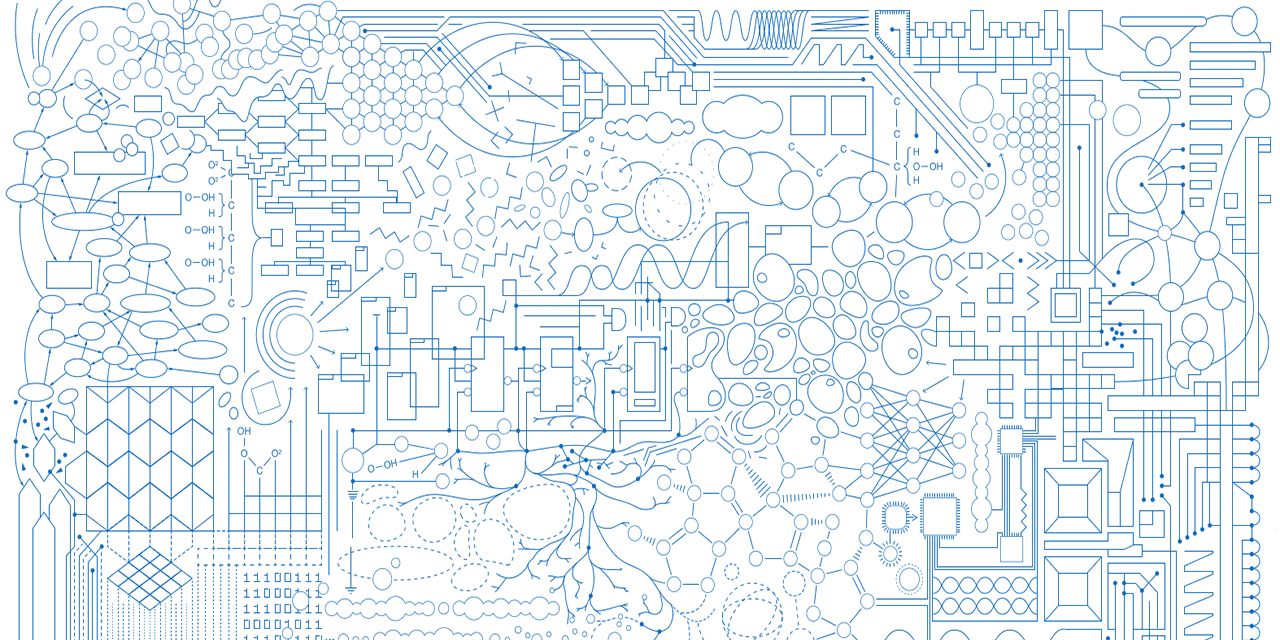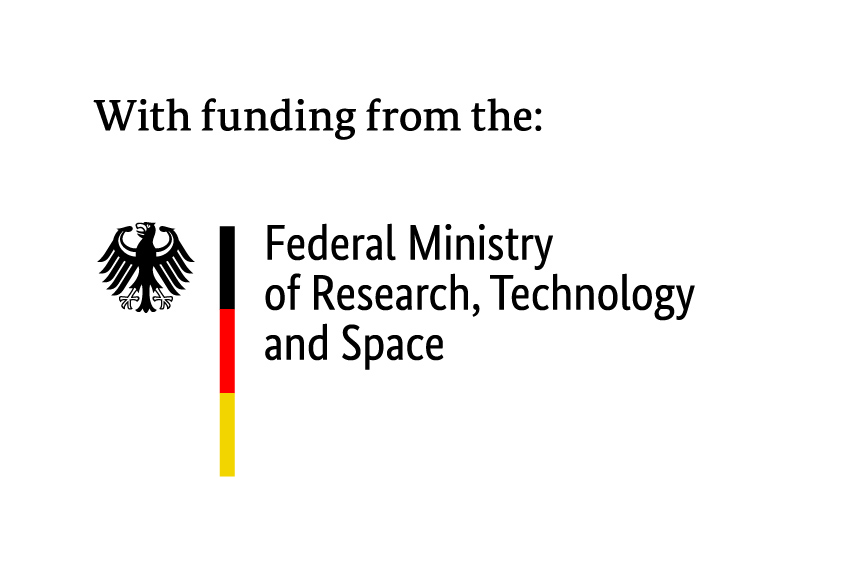Publication: Politics of the Machines Conference 2024 Proceedings
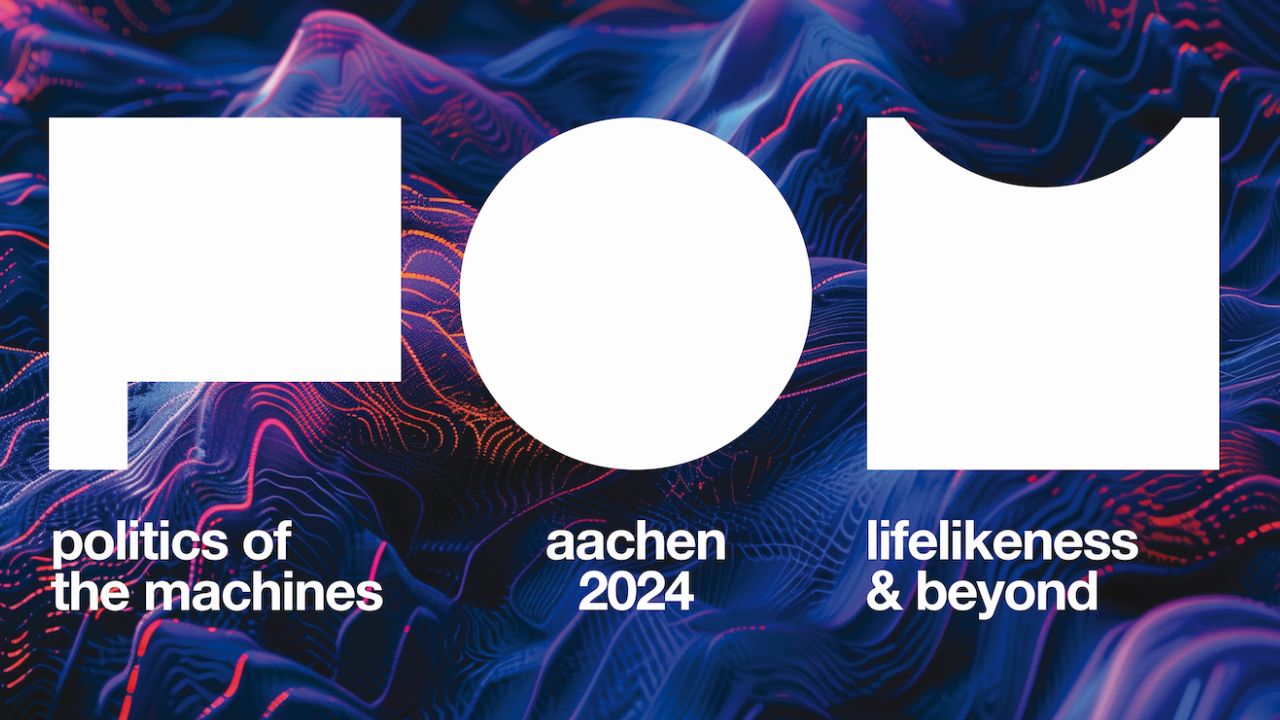
In 2024, we had the honor of hosting the Politics of the Machines conference in Aachen. We are very happy to announce that the conference proceedings are out now!

Many thanks to Ana María Guzmán Olmos, Gabriele Gramelsberger, Laura Beloff, Morten Søndergaard, Hassan Choubassi, Joe Elias and all the other authors for their contributions.
You can find the publications online as open access online: Vol. 1 and Vol. 2.
The overall theme of the POM-conference series is the question of how the machine and technology impact and contextualize artistic and cultural production and our perception of the world. Moreover, it is aiming at investigating the histories, theories and practices of machines and technologies in-between and beyond disciplines. It seeks to question the governing ideas in the sciences and the humanities through critical engagement with and empowerment of activities of creative production in the relational field of culture – technology – umwelt.
For more impressions and recaps of the 2024 conference in Aachen, check out our blog posts.
The Computer in Motion
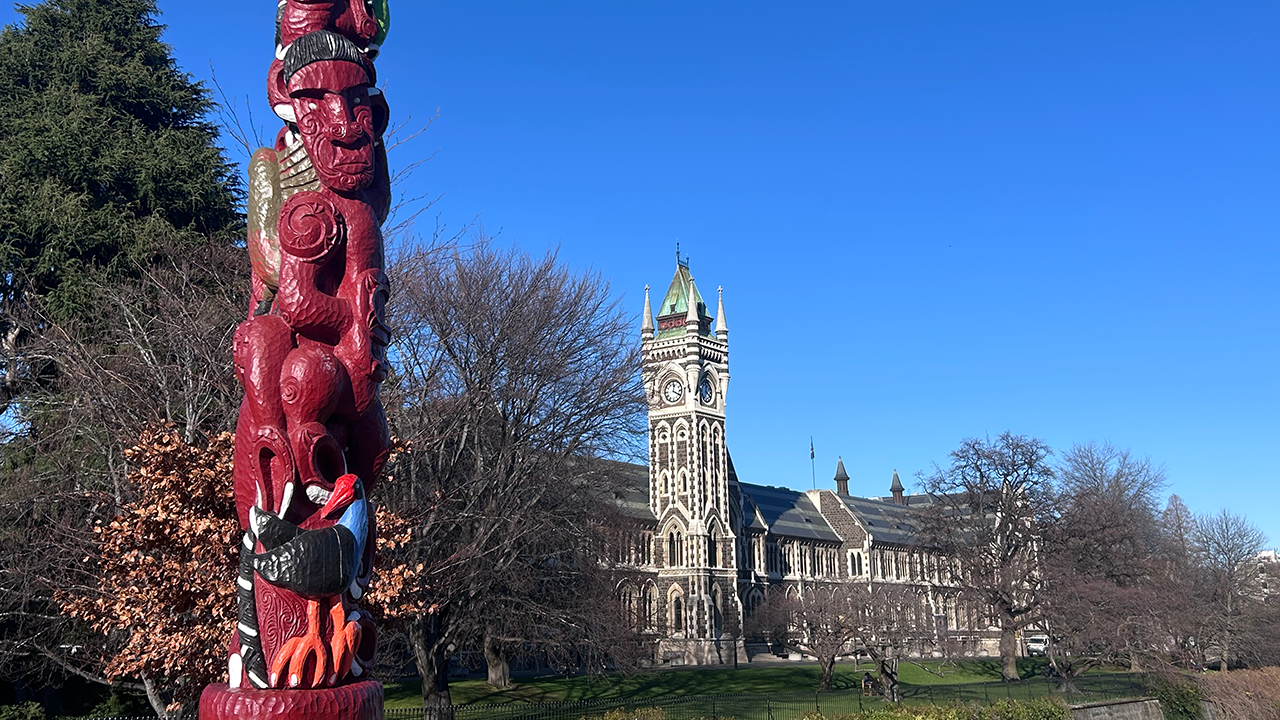
ARIANNA BORRELLI
The Symposium Computer in Motion critically questioned the notion of the computer as a “universal machine” by demonstrating how the computer adapted to and was appropriated in different milieus, cultures, communities and across borders. By historicising the movement of computer-related knowledge and artifacts, the presentations help us recover multiple sites of agency behind the idea of an unstoppable digital transformation driven by capitalist innovation. The event was organized by Barbara Hof (University of Lausanne) Ksenia Tatarchenko (John Hopkins University) and Arianna Borrelli (c:o/re RWTH Aachen) on behalf of the Division for History and Philosophy of Computing (HaPoC) in context of the 27th International Conference of History of Science and Technology, held at the University of Otago in Dunedin, New Zealand, and online from June 29 to July 5 2025.
The Symposium had an exceptional coverage of periods and cultures, showcased here as an example of the manifold thematic and methodological facets of the history of computing..
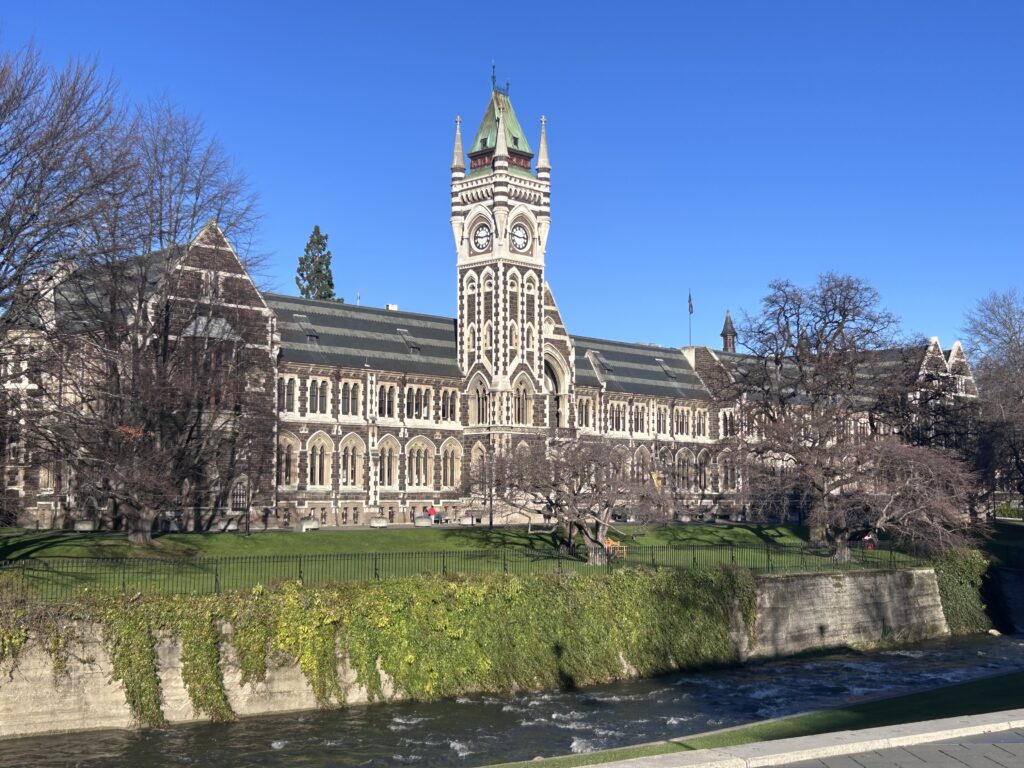
Decimal place-value notations prior to the 10th century: a material computer
Karine Chemla (School of Mathematics, University of Edinburgh, and researcher emerita CNRS)
This presentation argues that decimal place-value notations have been introduced as material tools of computation and that, until around the 10th century, they were used only as a material notation to compute, and were never shown in illustrations in mathematical writings, let alone used to express numbers. Furthermore, the presentation argues that the same remarks hold true whether we consider the earliest extant evidence for the use of such a numeration system in Chinese, Sanskrit, and Arabic sources. In all these geographical areas, decimal place-value numeration systems were first used as a material notation. These remarks suggest that, as a tool of computation, decimal place-value numeration systems have circulated in the context of a material practice, despite changes in the graphics for the digits, and changes in the materiality of the computation.
Smuggling Vaxes: or how my computer equipment was detained at the border
Camille Paloque-Bergès (Laboratoire HT2S, Conservatoire National des Arts et Métiers)
Between 1980 and 1984, the global computer market was heavily influenced by rising DEFCON levels and industrial espionage, alongside the imposition of restrictions on US computer equipment exports (Leslie, 2018). One notable example was the VAX mini-computer from DEC, which became subject to the COCOM doctrine, restricting its distribution due to its strategic importance. Popular in research communities, the VAX supported the Unix operating system and played a pivotal role in the development of Arpanet and the UUCP networks, both precursors to the modern Internet. Despite restrictions, the VAX was widely imported through workarounds or cloning techniques. This paradox of open-source R&D efforts occurring within a politically closed environment (Russell, 2013; Edwards, 1996) is illustrated by the infamous “Kremvax” joke on Usenet, which falsely claimed the USSR had joined the Internet. The study of the VAX’s role in both Eastern and Western Europe highlights the tension between technological openness and Cold War-era containment policies. These technical and administrative maneuvers, though trivial to the broader public, were crucial for the diffusion and cultural adoption of early data networks at the level of the system administrator working in a computer center eager to become a network node.
A Thermal History of Computing
Ranjodh Singh Dhaliwal (University of Basel) ranjodhdhaliwal.com
If you open a computer today, the biggest chunk of real estate, curiously, is not taken by processors, memories, or circuit boards but by increasingly complex heat sinks. Starting from this observation that all technology today needs extensive heat management systems, this piece theorizes the historical and conceptual dimensions of heat as it relates to computing. Using case studies from the history of computation–including air conditioning of the early mainframe computers running weather simulations (such as ENIAC in IAS in the 1960s) and early Apple machines that refused to run for long (because Steve Jobs, it is said, hated fans)–and history of information–the outsized role of thermodynamics in theorizing information, for example–I argue that computation, in both its hardware and software modalities, must be understood not as a process that produces heat as a byproduct but instead as an emergent phenomenon from the heat production unleashed by industrial capitalism.
Put another way, this talk narrates the story of computation through its thermal history. By tracing the roots of architectural ventilation, air conditioning of mainframes and computer rooms in the 20th century, and thermodynamics’ conceptual role in the history of information and software, it outlines how and why fans became, by volume, the biggest part of our computational infrastructures. What epistemological work is done by the centrality of heat in these stories of computation, for example, and how might we reckon with the ubiquitization of thermal technologies of computing in this age of global climate crises?
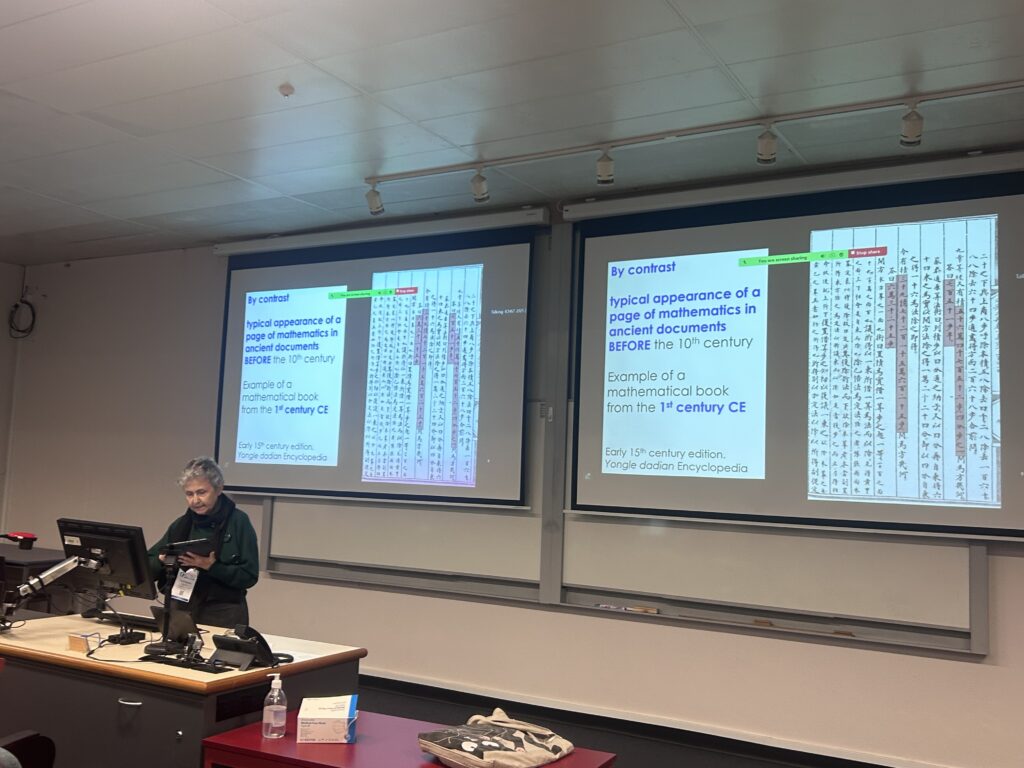
Supercomputing between science, politics and market
Arianna Borrelli (Käte-Hamburger-Kolleg “Cultures of Research” RWTH Aachen)
Since the 1950s the term “supercomputer” has been used informally to indicate machines felt to have particularly high speed or large data-handling capability. Yet it was only in the 1980s that systematic talk of supercomputers and supercomputing became widespread, when a growing number of supercomputing centers were established in industrialized countries to provide computing power mainly, but not only, for fundamental and applied research. Funding for creating these institutes came from the state. Although arguably at first these machines could be of use only in a few computationally-intensive fields like aerodynamics or the construction of nuclear power plants, sources suggest that there were also scientists from other areas, especially physicists, who promoted the initiative because they regarded increasing computing power as essential for bringing forward their own research. Some of them also had already established contacts with computer manufacturers. In my paper I will discuss and broadly contextualize some of these statements, which in the 1990s developed into a wide-spread rhetoric of a “computer revolution” in the sciences.
Neurons on Paper: Writing as Intelligence before Deep Learning
David Dunning (Smithsonian National Museum of American History)
In their watershed 1943 paper “A Logical Calculus of the Ideas Immanent in Nervous Activity,” Warren McCulloch and Walter Pitts proposed an artificial neural network based on an abstract model of the neuron. They represented their networks in a symbolism drawn from mathematical logic. They also developed a novel diagrammatic system, which became known as “McCulloch–Pitts neuron notation,” depicting neurons as arrowheads. These inscriptive systems allowed McCulloch and Pitts to imagine artificial neural networks and treat them as mathematical objects. In this manner, they argued, “for any logical expression satisfying certain conditions, one can find a net behaving in the fashion it describes.” Abstract neural networks were born as paper tools, constituting a system for writing logical propositions.
Attending to the written materiality of early neural network techniques affords new historical perspective on the notoriously opaque technology driving contemporary AI. I situate McCulloch and Pitts in a material history of logic understood as a set of practices for representing idealized reason with marks on paper. This tradition was shot through with anxiety around the imperfection of human-crafted symbolic systems, often from constraints as mundane as “typographical necessity.” Like the authors they admired, McCulloch and Pitts had to compromise on their notation, forgoing preferred conventions in favor of more easily typeset alternatives. Neural networks’ origin as inscriptive tools offers a window on a moment before the closure of a potent black box, one that is now shaping our uncertain future through ever more powerful, ever more capitalized deep learning systems.
Knowledge Transfer in the Early European Computer Industry
Elisabetta Mori (Universitat Pompeu Fabra, Barcelona)
The collaboration with an academic mathematical laboratory or research institute is a recurring pattern in the genesis of early computer manufacturers: it typically involved financial support and exchanges of patents, ideas and employees.
In my presentation I show how knowledge transfer between academic laboratories and private corporations followed different strategies and was shaped by the contingent policies and contexts in which they unfolded. The presentation focuses on three different case studies: the partnership between the Cambridge Mathematical Laboratory and Lyons, begun in 1947; the example of the Mathematisch Centrum in Amsterdam and its 1956 spin-off NV Electrologica; and the case of the Matematikmaskinnämnden and Facit, the Swedish manufacturer of mechanical calculators, which entered the computer business in 1956.
The three case studies are representative of three distinct patterns. First, knowledge transfer by a sponsorship agreement. Funding and supporting the construction of the EDSAC computer enabled the Lyons catering company (a leader in business methods) to appropriate its design to manufacture its LEO Computers. Second, knowledge transfer through a spin-off. Electrologica (the Netherland’s first computer manufacturer) was established by computer scientists of the Mathematisch Centrum as a spin-off to commercialize the computers designed by the institute. Third, the recruitment of technical staff from a center of excellence. Facit entered the computer business by hiring most of its technicians and researchers from Matematikmaskinnämnden (the research organization of the Swedish government). Taken together the three case studies cast light on how R&D diffused in the embryonic computer industry in post-war Europe.
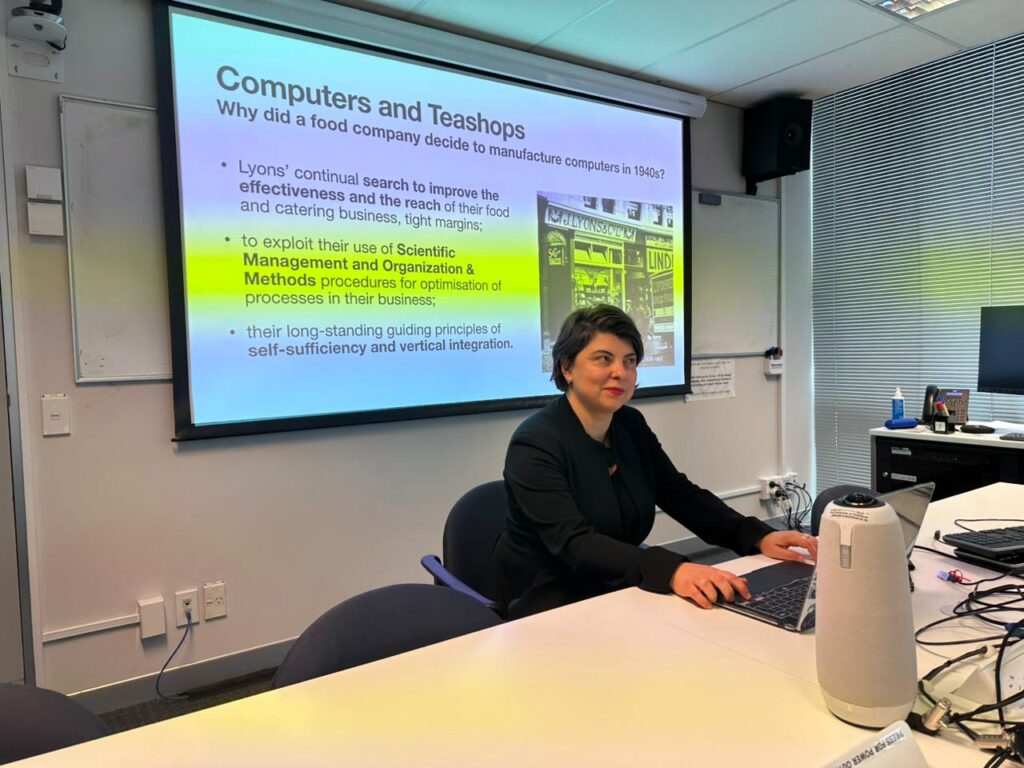
A commission and its nationalist technicians: expertise and activities in the Brazilian IT field in the 1970s
Marcelo Vianna (Federal Institute of Education Science and Technology of Rio Grande do Sul)
The history of Brazilian IT in the 1970s is influenced by the work of a group of specialists who occupied spaces in university and technocratic circles to propagate ideas of technological autonomy from the Global North. In this sense, there is a consensus that an elite of this group, acting in the Commission for the Coordination of Electronic Processing Activities (CAPRE), managed to establish a national Informatics policy, giving rise to an indigenous computer industry at the end of the decade. However, there is still much to be explored about the dynamics surrounding CAPRE’s different activities and the profile of its “ordinary” technicians, considering the breadth of attributions that the small body assumed in structuring the Brazilian IT field. Our proposal is to map them by combining prosopography and identifying the concepts, cultures and practices that guided its actions, such as the ideas of “rationalization” and “technological nationalism” and the establishment of a technopolitical network with the technical-scientific community of the period, including the first political class associations in the field of Computer Science. The paper will discuss the composition of the group and its expertise and trajectories, as well as the main actions of the technicians aimed at subsidizing CAPRE’s decision-makers. In this sense, the considerable degree of cohesion between technicians and its leaders ensured that an autonomous path was established for Informatics in the country, even though they were exposed to the authoritarian context of the period, which led to CAPRE itself being extinguished in 1979.
People of the Machine: Seduction and Suspicion in U.S. Cold War Political Computing
Joy Rohde (University of Michigan)
The computational social scientific projects of the Cold War United States are known for their technocratic and militarized aspirations to political command and control. Between the 1960s and the 1980s, Defense officials built systems that sought to replace cognitively limited humans with intelligent machines that claimed to predict political futures. Less familiar are projects that sought to challenge militarized logics of command and control. This paper shares the story of CASCON (Computer-Aided System for Handling Information on Local Conflicts), a State Department-funded information management system that mobilized the qualitative, experiential knowledge and political acumen of diplomats to challenge U.S. Cold War logics, like arms trafficking and unilateral interventionism. The system’s target users—analysts in the Arms Control and Disarmament Agency and the State Department tasked with monitoring conflicts in the global South—were notoriously skeptical of the Pentagon’s militarism and computational solutionism. Yet users ultimately rejected the system because it did tell them what to do! Despite their protestations, they had internalized the command and control logics of policy computing.
CASCON was an early effort to design around the contradictions produced by coexisting fears of human cognitive and information processing limits, on the one hand, and of ceding human agency and expertise to machines on the other. I conclude by arguing that CASCON reflects the simultaneous seduction and fear of the quest to depoliticize politics through technology—an ambivalence that marks contemporary computing systems and discourse as well.
AI in Nomadic Motion: A Historical Sociology of the Interplay between AI Winters and AI Effects
Vassilis Galanos (University of Stirling)
Two of the most puzzling concepts in the history of artificial intelligence (AI), namely the AI winter and the AI effect are mutually exclusive if considered in tandem. AI winters refer to the phenomenon of loss in trust in AI systems due to underdelivery of promises, leading to further stagnation in research funding and commercial absorption. The AI effect suggests that AI’s successful applications have historically separated themselves from the AI field by the establishment of new/specialised scientific or commercial nomenclature and research cultures. How do AI scientists rebrand AI after general disillusionment in their field and how do broader computer science experts brand their research as “AI” during periods of AI hype? How does AI continue to develop in periods of “winter” in different regions’ more pleasant climates? How do periods of AI summer contribute to future periods of internet hype during their dormancy? These questions are addressed drawing from empirical research into the historical sociology of AI, a 2023 secondary analysis between technological spillages and unexpected findings for internet and HCI research during periods of intense AI hype (and vice versa, AI advancements based on periods of internet/network technologies hype), as well as a 2024 oral history project on AI at Edinburgh university and the proceedings of the EurAI Workshop on the History of AI in Europe during which, several lesser known connections have been revealed. To theorise, I am extending Pickering/Deleuze and Guattari’s notion of nomadic science previously applied to the history of mathematics and cybernetics.
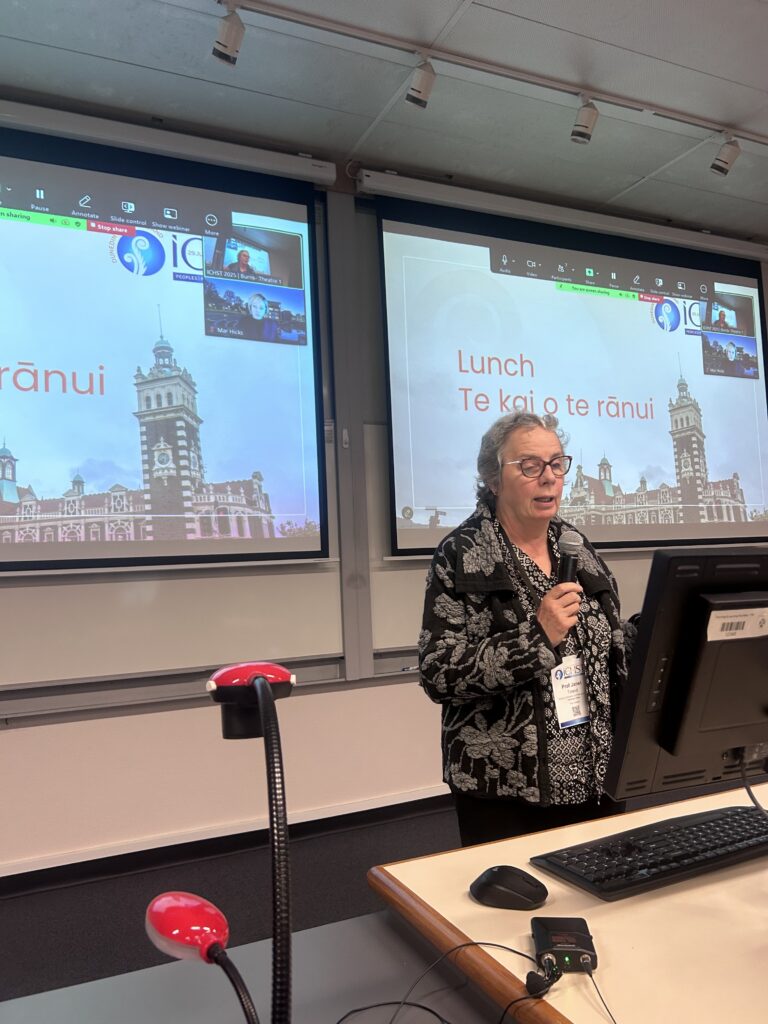
Vector and Raster Graphics : Two Pivotal Representation Technologies in the Early Days of Molecular Graphics
Alexandre Hocquet and Frédéric Wieber (Archives Poincaré, Université de Lorraine), Alin Olteanu (Shanghai University), Phillip Roth (Käte-Hamburger-Kolleg “Cultures of Research” RWTH Aachen)
https://poincare.univ-lorraine.fr/fr/membre-titulaire/alexandre-hocquet
Our talk investigates two early computer technologies for graphically representing molecules – the vector and the raster display – and traces their technical, material, and epistemic specificity for computational chemistry, through the nascent field of molecular graphics in the 1970s and 1980s. The main thesis is that both technologies, beyond an evolution of computer graphics from vector to raster displays, represent two modes of representing molecules with their own affordances and limitations for chemical research. Drawing on studies in the media archaeology of computer graphics and in history of science as well as primary sources, we argue that these two modes of representing molecules on the screen need to be explained through the underlying technical objects that structure them, in conjunction with the specific traditions molecular modeling stems from, the epistemic issues at stake in the involved scientific communities, the techno-scientific promises bundled with them, and the economic and industrial landsape in which they are embedded.
Erring Humans, Learning Machines: Translation and (Mis)Communication in Soviet Cybernetics and AI
Ksenia Tatarchenko (John Hopkins University)
This paper centers on translation in Soviet cybernetics and AI. Focusing on cultural practices of translation and popularization as reflected in widely-read scientific and fictional texts, I interrogate practices of interpretation in relation to the professional virtue of scientific veracity as well as its didactic function in the Soviet cybernetic imaginary throughout the long Thaw. The publication of the works of Norbert Wiener, Alan Turing, and John von Neumann in Russian was not simply aimed at enabling direct access to the words and thoughts of major bourgeois thinkers concerned with automation and digital technologies: translating and popularizing cybernetics in the post-Stalinist context was about establishing new norms for public disagreement. No longer limited to the opposition of true and false positions, the debates around questions such as “Can a machine think?” that raged across a wide spectrum of Soviet media from the late 1950s to the 1980s were framed by an open-ended binate of what is meaningful or, on the contrary, meaningless. In his classic 1992 book The Human Motor: Energy, Fatigue, and the Origins of Modernity, Anson Rabinbach demonstrates how the utopian obsession with energy and fatigue shaped social thought in modern Europe. In a similar line, this project explores how human error takes on a new meaning when the ontology of information central to Western cybernetics is adopted to a Soviet version of digital modernity.
Tech Disruptors, Then and Now
Mar Hicks (University of Virginia)
This paper explores the connected histories of whistleblowers and activists who worked in computing from the 1960s through the present day, showing how their concerns were animated by similar issues, including labor rights, antiracism, fighting against gender discrimination, and concerns regarding computing’s role in the military-industrial complex. It looks at people who tried to fight the (computer’s) power from within the computing industry, in order to write an alternative history of computing.
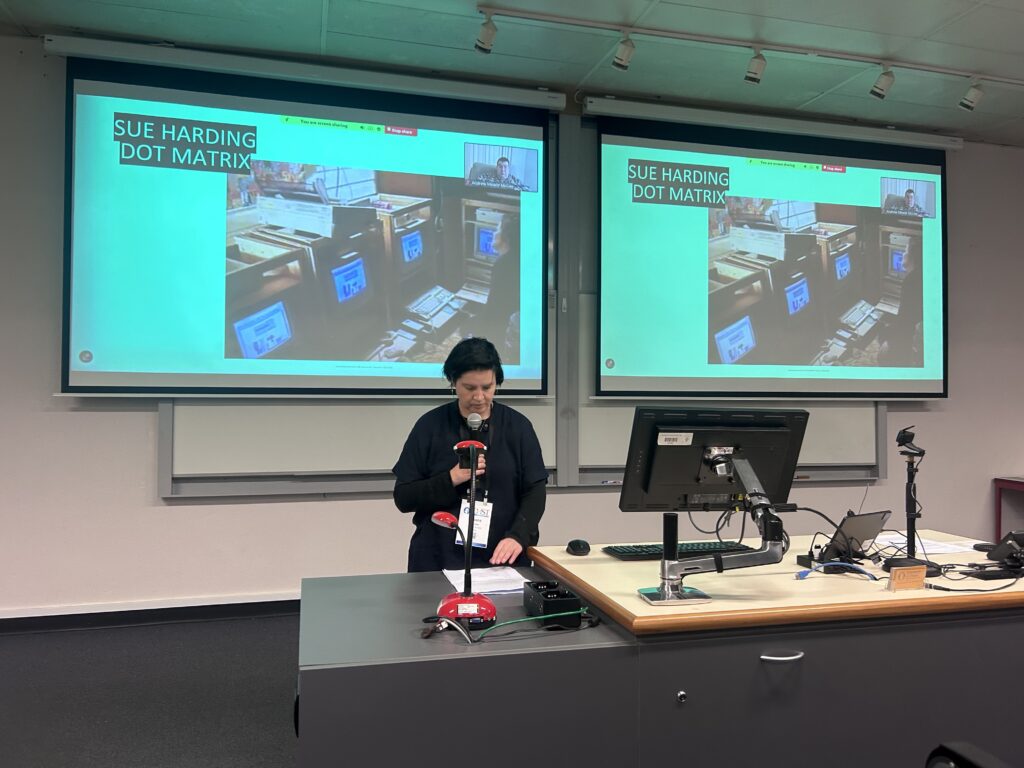
Nosebleed Techno, Sound Jams and Midi Files: the Creative Revolution of Australian Musicians in the 1990s through AMIGA Music Production.
Atosha McCaw (Swinburne University of Technology, Melbourne)
This paper looks at the innovative use of the AMIGA computer by Australian musicians in the 1990s, highlighting its role as a cost-effective tool for music production, experimentation, and collaboration. By examining how these artists harnessed the power of this technology to share files and rapidly materialize creative concepts, we uncover a fascinating chapter in the evolution of electronic music in Australia.
Computers and Datasets as Sites of Political Contestation in an Age of Rights Revolution: Rival Visions of Top-Down/Bottom-Up Political Action Through Data Processing in the 1960s and 1970s United States
Andrew Meade McGee (Smithsonian Air and Space Museum)
As both object and concept, the electronic digital computer featured prominently in discussions of societal change within the United States during the 1960s and 1970s. In an era of “rights revolution,” discourse on transformative technology paralleled anxiety about American society in upheaval. Ever in motion, shifting popular conceptualizations of the capabilities of computing drew comparisons to the revolutionary language of youth protest and the aspirations of advocacy groups seeking full political, economic, and social enfranchisement. The computer itself – as concept, as promise, as installed machine – became a contested “site of technopolitics” where political actors appropriated the language of systems analysis and extrapolated consequences of data processing for American social change. Computers might accelerate, or impede, social change.
This paper examines three paradigms of the computer as “a machine for change” that emerge from this period: 1) One group of political observers focused on data centralization, warning of “closed worlds” of institutional computing that might subject diverse populations to autocratic controls or stifle social mobility; 2) In contrast, a network of social activists and radicals (many affiliated with West Coast counterculture and Black Power movements) resisted top-down paradigms of data centralization and insisted community groups could seize levers of change by embracing their own forms of computing. 3) Finally, a third group of well-meaning liberals embraced the potential of systems analysis as a socially-transformative feedback loop – utilizing the very act of data processing itself to bridge state institutions and local people, sidestepping ideological, generational, or identity-based conflict.
Computing a Nation: Science-Technology Knowledge Networks, Experts, and the Shaping of the Korean Peninsula (1960-1980)
Ji Youn Hyun (University of Pennsylvania)
This paper presents a history of the ‘Systems Development Network’ (SDN), the first internet network in Asia established in 1982, developed in South Korea during the authoritarian presidency of Park Chung-Hee (1962-1979). I examine scientists and engineers who were repatriated under Park’s Economic Reform and National Reconstruction Plan to reverse South Korea’s ‘brain-drain’, re-employed under government sponsored research institutions, and leveraged to modernize state industrial manufacturing.
Pioneered by computer scientist Kilnam Chon, often lauded as ‘the father of East Asia’s internet’, a transnationally trained group of experts at the Korea Institute of Electronics Technology (KIET) developed the nation’s internet infrastructure, despite repeated government pushback and insistence on establishing a domestic computer manufacturing industry. Drawing on the Presidential Archive and National Archives of Korea, I describe how the SDN manifested through a lineage of reverse-engineering discarded Cheonggyecheon black market U.S. Military Base computer parts, prototyping international terminal and gateway connections, and “extending the instructional manual” of multiple microprocessors.
The reconfiguration of computer instructional sets are one of many cases of unorthodox, imaginative, and off-center methods practiced in Korea to measure up and compete with Western computing. Although repatriated scientists were given specific research objectives and goals, their projects fundamentally materialized through a series of experimental and heuristic processes. This paper will illuminate South Korea’s computing history, which until now has not been the subject of any history, and also allow a broader reflection on the transformation of East Asia during the Cold War––highlighting political change through the development of computing.
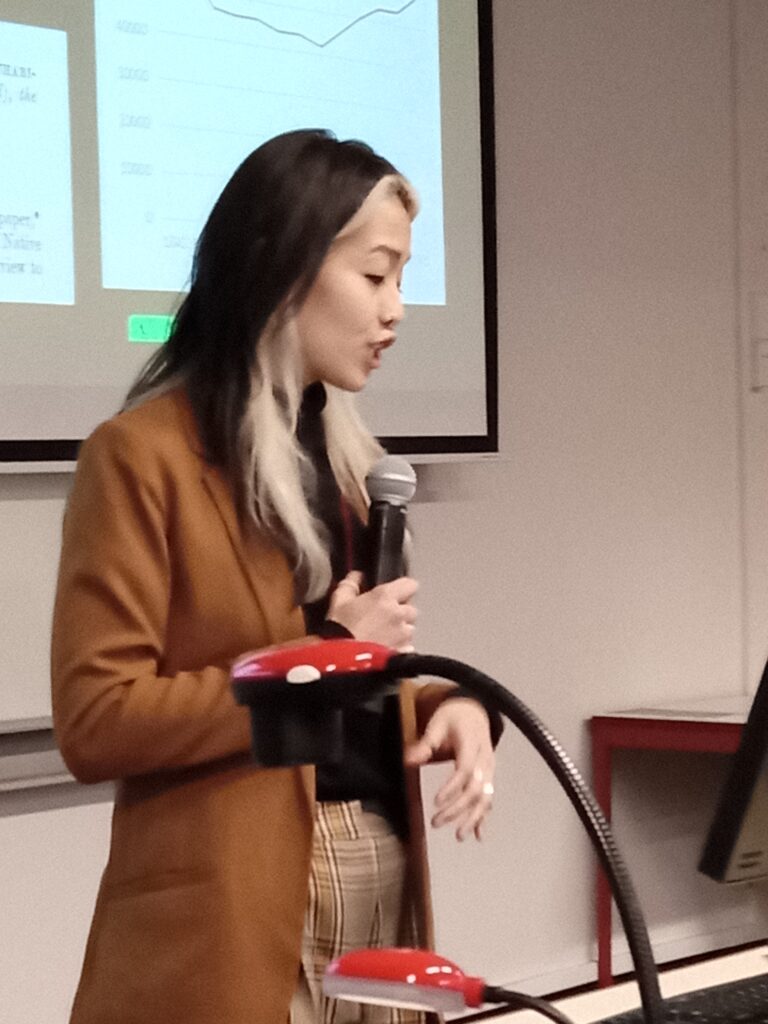
Collecting Data, Sharing Data, Modeling Data: From Adam and Eve to the World Wide Web within Twenty Years
Barbara Hof (University of Lausanne)
Much like physicists using simulations to model particle interactions, scientists in many fields, including the digital humanities, are today applying computational techniques to their analysis and research and to the study of large data sets. This paper is about the emergence of computer networks as the historical backbone of modern data sharing systems and the importance of data modeling in scientific research. By exploring the history of computer data production and use in physics from 1990 back to 1970, when the Adam & Eve scanning machines began to replace human scanners in data collection at CERN, this paper is as much about retelling the story of the invention of the Web at CERN as it is about some of the technical, social and political roots of today’s digital divide. Using archival material, it argues that the Web, developed and first used at physics research facilities in Western Europe and the United States, was the result of the growing infrastructure of physics research laboratories and the need for international access to and exchange of computer data. Revealing this development also brings to light early mechanisms of exclusion. They must be seen against the backdrop of the Cold War, more specifically the fear that valuable and expensive research data at CERN could be stolen by the Soviets, which influenced both the development and the restriction of data sharing.
Differing views of data in Aotearoa: the census and Māori data
Daphne Zhen Ling Boey and Janet Toland (Victoria University of Wellington | Te Herenga Waka)
This presentation explores differing concepts of “data” with respect to the Indigenous Māori people of Aotearoa and colonial settlers. A historical lens is used to tease out long-term power imbalances that still play out in the data landscape today. Though much data has been collected about Māori by successive governments of New Zealand, little benefit has come to Māori themselves.
This research investigates how colonisation impacted Māori, and the ongoing implications for data. The privileging of Western approaches to harnessing the power of data as opposed to indigenous ways stems from colonisation – a system that results in “a continuation of the processes and underlying belief systems of extraction, exploitation, accumulation and dispossession that have been visited on Indigenous populations.”
We examine the census, an important tool that provides an official count of the population together with detailed socioeconomic information at the community-level and highlight areas where there is a fundamental disconnect between the Crown and Māori. Does Statistics New Zealand, as a Crown agency, have the right to determine Māori ethnicity, potentially undermining the rights of Māori to self-identify? How do differing ways of being and meaning impact how we collect census data? How does Aotearoa commit to its Treaty obligations to Māori in the management and optimisation of census data? We also delve into Māori Data Sovereignty, and its aim to address these issues by ensuring that Māori have control over the collection, storage and use of their own data as both enabler of self-determination and decolonisation.
History of computing from the perspective of nomadic history. The case of the hiding machine
Liesbeth De Mol (CNRS, UMR 8163 Saviors, Textes, Langage, Université de Lille)
Computing as a topic is one that has moved historically and methodologically through a variety of disciplines and fields. What does this entail for its history? The aim of this talk is to provoke a discussion on the future of the history of computing. In particular, I use a notion of so-called nomadic history. This is in essence the idea to identify and overcome ones own disciplinary and epistemological obstacles by moving across a variety of and sometimes conflicting methods and fields. I apply the method to the case of the history of the computer-as-a-machine which is presented as a history of hide-and-seek. I argue that the dominant historical narrative in which the machine got steadily hidden away behind layers of abstraction needs countering both historically as well as epistemologically. It is based on a collaboratively written chapter for the forthcoming book “What is a computer program?”.
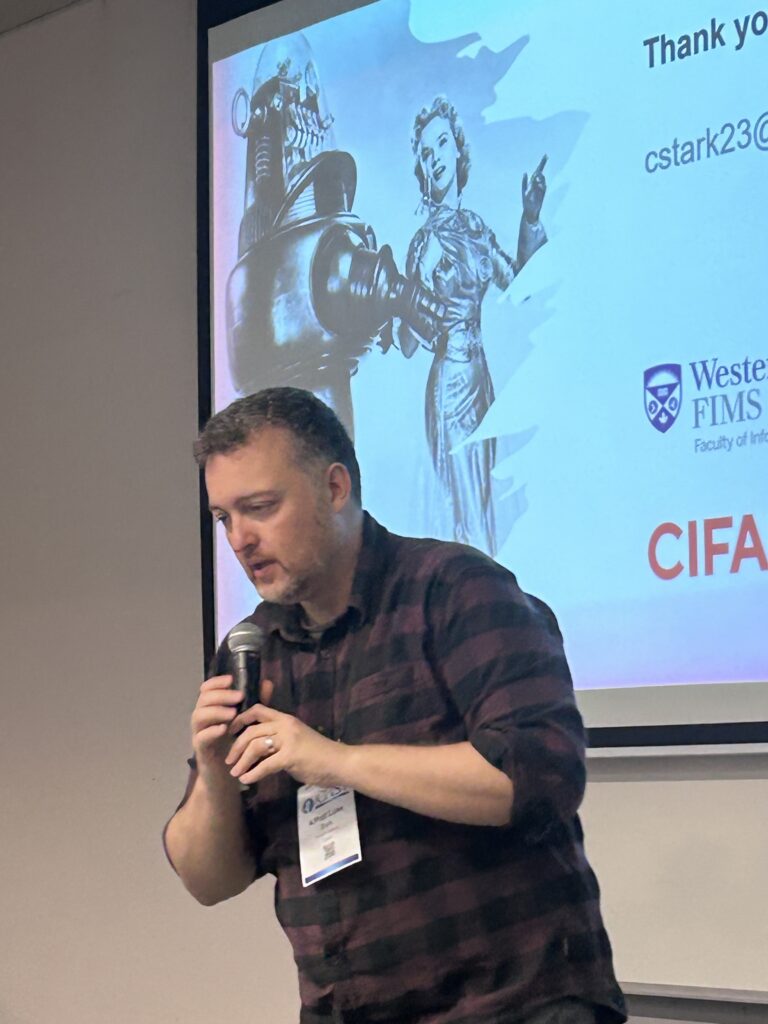
Modeling in history: using LLMs to automatically produce diagrammatic models synthesizing Piketty’s historiographical thesis on economic inequalities
Axel Matthey (University of Lausanne)
This research integrates theoretical digital history with economic history. Employing Large Language Models, we aim to automatically produce historiographical diagrams for analysis. Our experience with the manual production of historiographical diagrams suggests that LLMs might be useful to support the automatic generation of such historiographical diagrams which aim at facilitating the visualization and understanding of complex historical narratives and causal relationships between historical variables. Our initial exploration involved using Google’s LLM (Gemini 1.5 Pro) and OpenAI’s GPT-4o to convert a concise historical article by Piketty into a simplified causal diagram. This article is A Historical Approach to Property, Inequality and Debt: Reflections on Capital in the 21st Century . LLMs have demonstrated remarkable capabilities in various domains, including understanding and generating code, translating languages, and even creating different creative text formats. We show that LLMs can be trained to analyze historical texts, identify causal relationships between concepts, and automatically generate corresponding diagrammatic models. This could significantly enhance our ability to visualize and comprehend complex historical narratives, making implicit connections explicit, and facilitating further exploration and analysis. Historiographical theories explore the nature of historical inquiry, focusing on how historians represent and interpret the past: in this research, the use of diagrams is being considered as a means to enhance the communication, visualization, and understanding of these complex theories.
Computational Illegalism
Luke Stark (Western University Canada)
In his analysis of the concept in his lectures on the development of the “punitive society,” Michel Foucault describes the eighteenth century as a period of “systematic illegalism,” including both lower-class or popular illegalism and “the illegalism of the privileged, who evade the law through status, tolerance, and exception” (Foucault 2015, 142). In this paper, I argue that illegalism has new utility as an analytic concept in the history of computing. Illegalism is a characteristic of both the business models and rhetorical positioning of many contemporary digital media firms. Indeed, such “computational illegalism” is so rife that commentators often seem to accept it as a necessary aspect of Silicon Valley innovation.
In this presentation, I describe illegalism as theorized by Foucault and others and develop a theory of platform illegalism grounded in the history of technical and business models for networked computing since the 1970s. This presentation is part of a larger project in which I document the prevalence of illegalism on the part of digital platforms in various arenas, focusing in particular on platform labor and generative AI; examine the range of responses to such illegalism from consumers, activists, and governments; and formulate recommendations regarding ways to account for platform illegalism in scholarly and activist responses as part of governance mechanisms for digitally mediated societies.
The datafied “enemy,” Computational work, and Japanese American incarceration during World War II
Clare Kim (University of Illinois Chicago)
Following the events of Pearl Harbor in December 1941, a series of U.S. presidential proclamations and executive orders authorized the legal designation and treatment of people of Japanese ancestry as “enemy aliens.” The designation of the US West Coast as military zones under Executive Order 9066 enabled the removal and subsequent incarceration of more than 120,000 Japanese Americans in internment camps. The problem of identifying, incarcerating, and managing Japanese enemy alien populations necessitated the treatment of these military zones and spaces as information environments, where the classification of Japanese and Japanese American residents as enemy alien, citizen, or an alternative subject position could be adjudicated. This paper explores how conflict in the Pacific theater of World War II contoured the entanglements between computational work and Asian and Asian Americans residing in the U.S., recounting the setup of statistical laboratories established to track and manage Japanese American incarceration. It reveals how datafication practices were collapsed and equated with bodies that were racialized as an enemy alien and yellow peril, which paradoxically effaced other subject positions to which Japanese Americans came to occupy at the time: in particular, the invisible labor to which they furnished to statistical work as technical experts themselves.
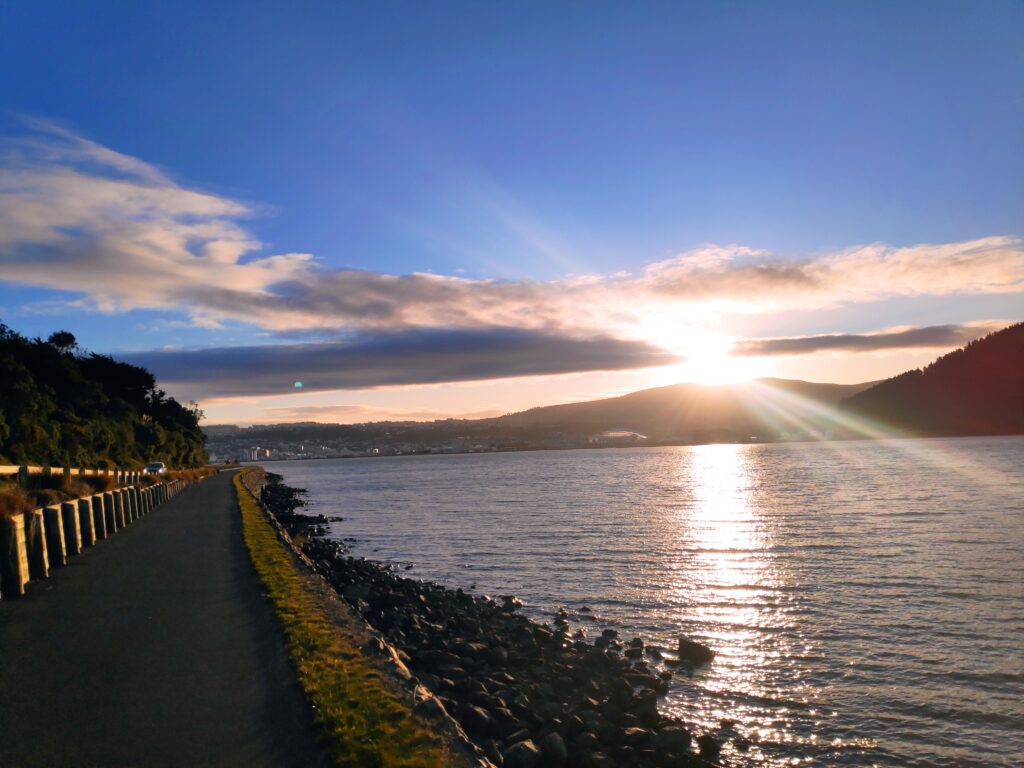
Audio Tip: Art, Science, and the Politics of Knowledge
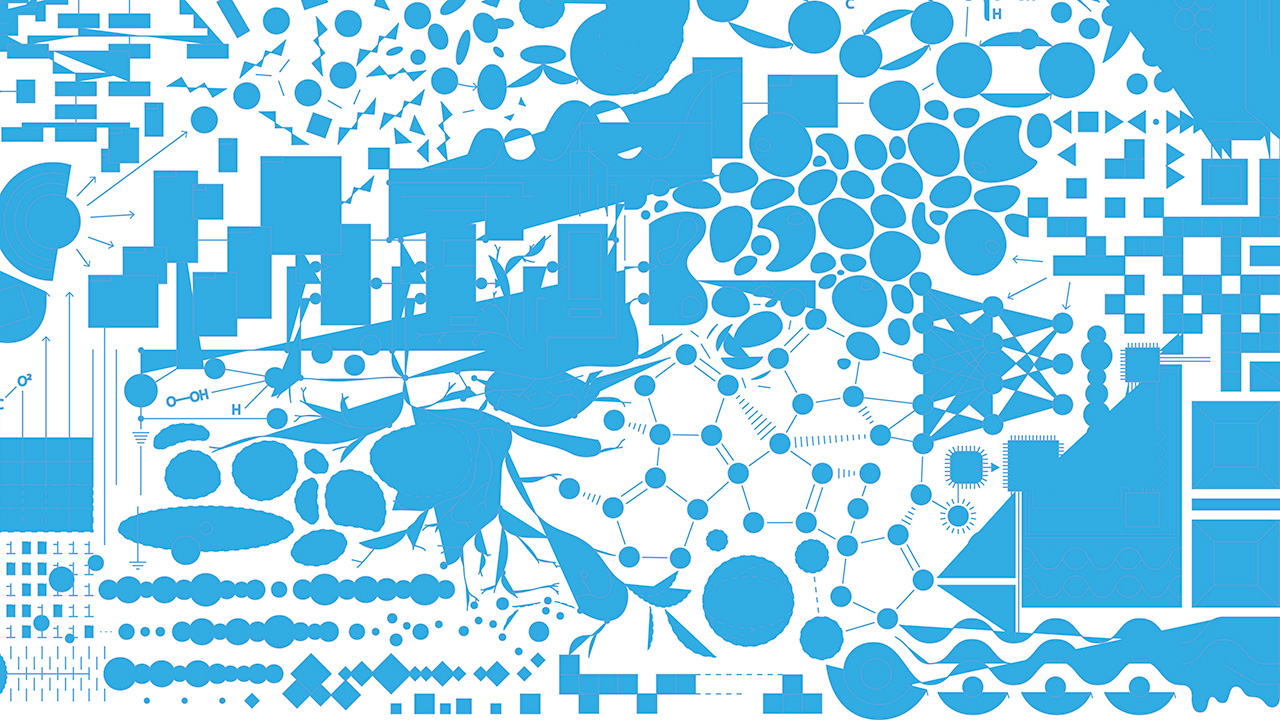
KHK c:o/re fellow Hannah Star Rogers sat down with Nicholas McCay for the podcast “Science, Technology, and Society” to talk about her book “Art, Science, and the Politics of Knowledge” (MIT Press, 2022).
In her research, Hannah argues that art and science are not distinct domains, but intertwined practices that both produce knowledge through shared methodologies such as visualization, experimentation, and inquiry.
You can listen to the episode on the podcast’s website.
On our blog, you can read more about Hannah’s work researching the connection between science and art.
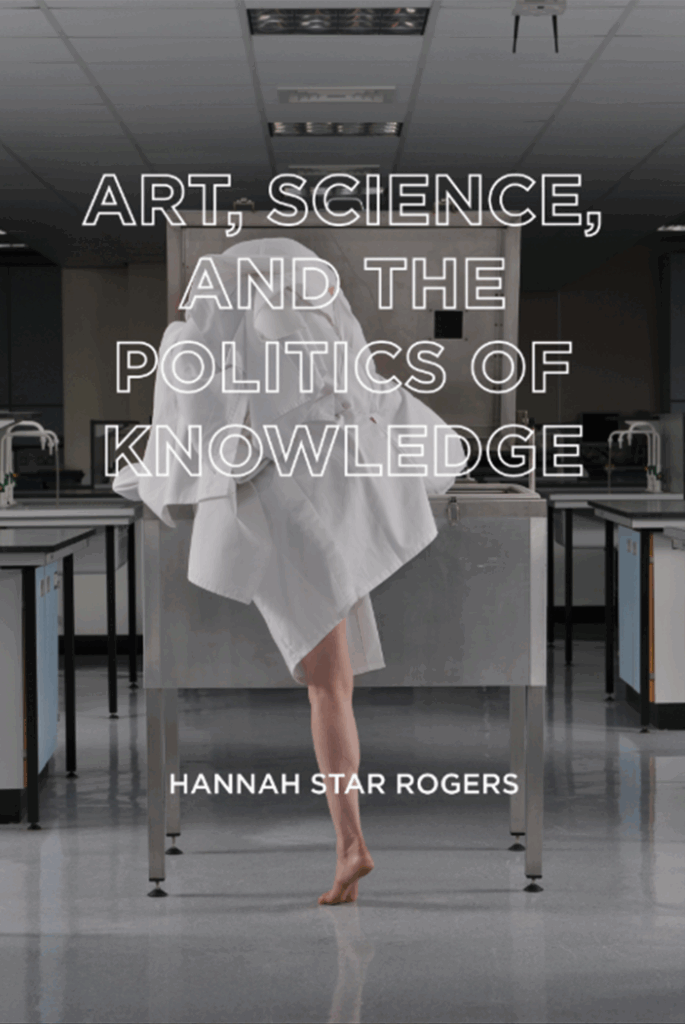
Get to know our Fellows: Matthew N. Eisler

Get to know our current fellows and gain an impression of their research. In a new series of short videos, we asked them to introduce themselves, talk about their work at c:o/re and the research questions that fascinate them.
In this video, Matthew N. Eisler, historian of science and technology at the University of Strathclyde, shares his research on the relationship between environmental regulations, society, and everyday life. Focusing on less obvious aspects of life in a sustainable society, he investigates how green production shapes social relations and sheds light on different visions of green work.
Check out our media section or our YouTube channel to have a look at the other videos.
Get to know our Fellows: Hannah Star Rogers
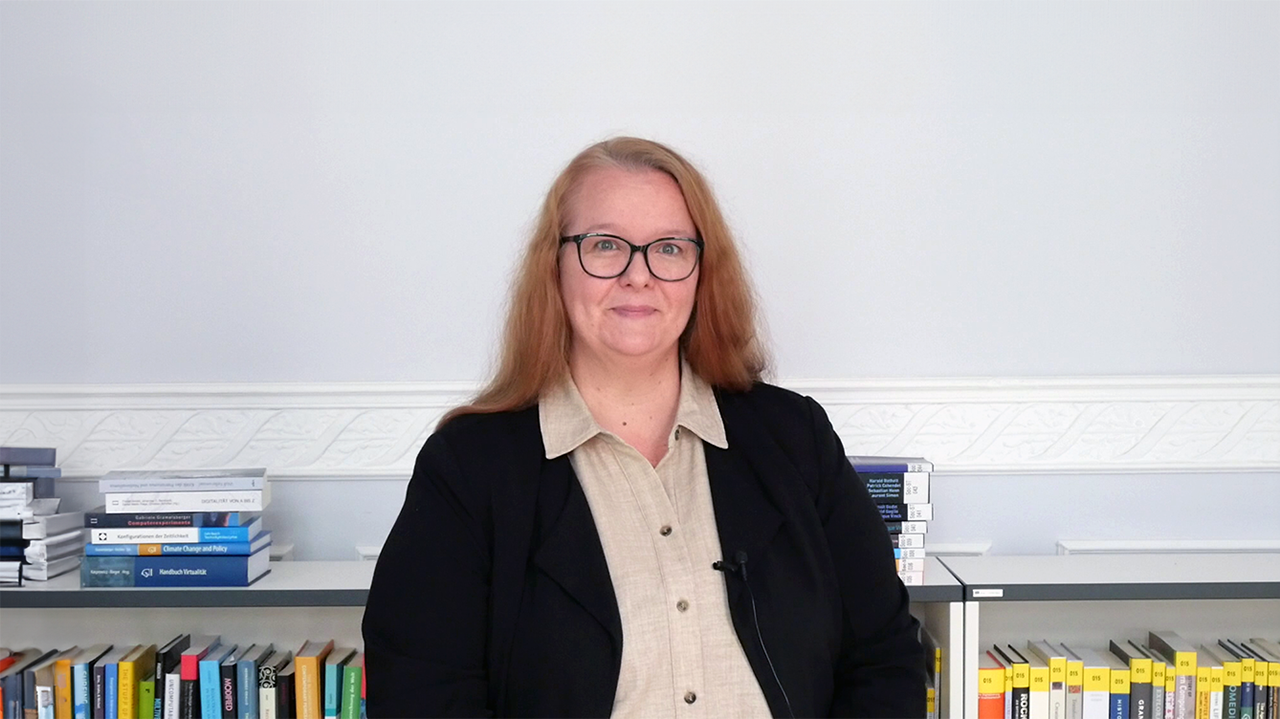
Get to know our current fellows and gain an impression of their research. In a new series of short videos, we asked them to introduce themselves, talk about their work at c:o/re and the research questions that fascinate them.
In this video, Hannah Star Rogers, an art, science and technology scholar and a curator, discusses her work at the crossroads of science and technology studies and contemporary art. She expands the traditional STS research framework by incorporating material practices of artists and curatorial work.
Check out our media section or our YouTube channel to have a look at the other videos.
Fellow Publication: Integrative Contemporary Art and Science Practices Building Catalytic Structures
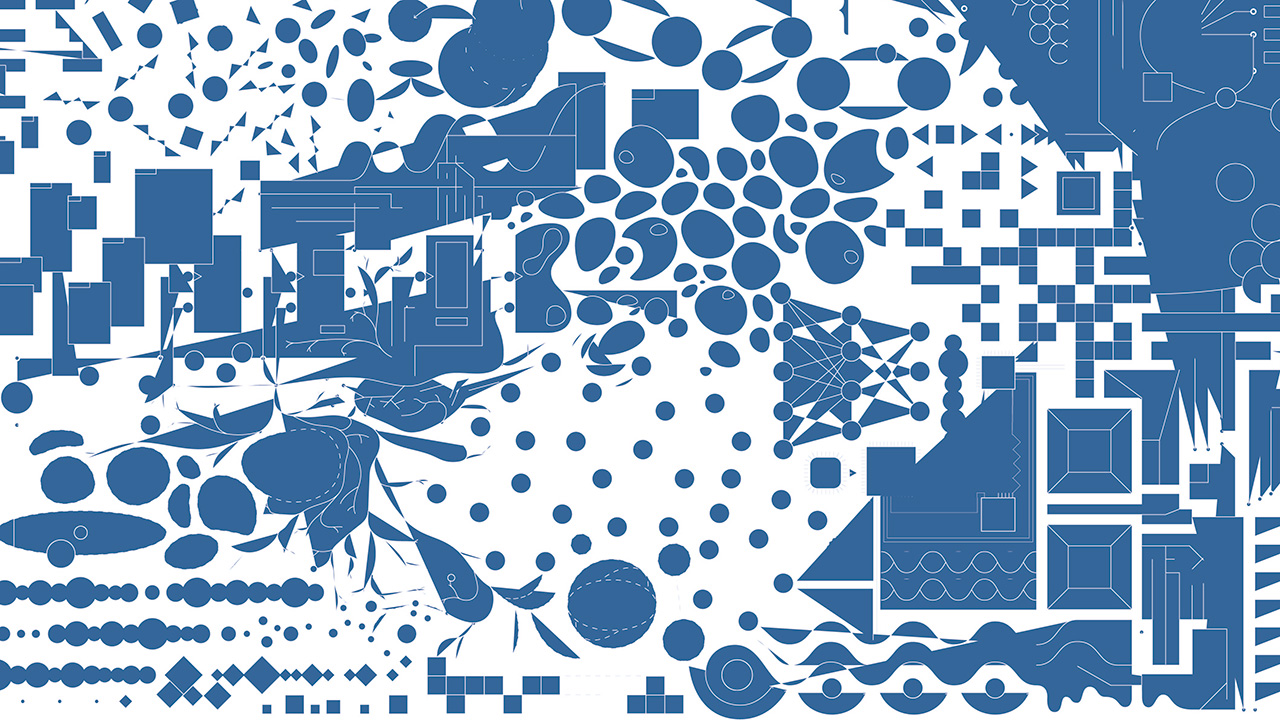
KHK c:o/re Fellow Hannah Star Rogers contributes to Integrative Contemporary Art and Science Practices Building Catalytic Structures, a newly released volume, edited by J.D. Talasek and Barbara Stauffer, and published by Routledge.
Contemporary Art and Science Practices: Building Catalytic Structures (2025) considers how such interdisciplinary efforts have shifted from outsider experiments to increasingly institutionalized initiatives. It examines the motivations, challenges, and transformative potential of this integration across public engagement, education, and cultural discourse. This groundbreaking collection brings together leading thinkers and practitioners to examine the evolving relationship between contemporary art and scientific inquiry. In addition to Rogers, the text features contributions from other leading voices in art and science, including William L. Fox, Ellen Levy, Mel Chin, Brandon and Aurore Ballengée, and Jill Scott. This volume is a vital resource for researchers, educators, curators, artists, scientists, and policy makers navigating the complex intersections of knowledge, creativity, and collaboration.
Rogers’ chapter, “Art, Science and Technology Studies: Charting Collaborative Practice,” offers a compelling analysis of the power dynamics, collaborative models, and institutional conditions shaping art-science partnerships today. Rogers’ work contributes a critical theoretical framework from Art, Science, and Technology Studies (ASTS), a subfield of Science and Technology Studies (STS), to advocate for more symmetrical, equitable modes of interdisciplinary collaboration.
Rogers argues for understanding both art and science as socially and culturally situated systems of knowledge. Drawing on examples ranging from historical botanical illustration to contemporary biotech art and artist residencies, she categorizes four prevalent models of collaboration, each with distinct power structures, intentions, and outcomes. She critiques the persistent instrumentalization of art – particularly in science communication – where artistic practice is often reduced to a tool for enhancing scientific messages. Her chapter provides a roadmap for critically evaluating and fostering more generative, balanced partnerships between artists and scientists.
About the Editors:
J.D. Talasek is a curator, researcher, and writer known for integrating the arts into scientific contexts through his leadership at the National Academy of Sciences and as editor-in-chief of Leonardo Journal.
Barbara Stauffer, a ceramic artist and former program director at the Smithsonian’s National Museum of Natural History, has led numerous interdisciplinary initiatives focused on public engagement and education.
Hidden Futures. Work – Click and Crowds

ANA MARÍA GUZMÁN
Which chain of work processes are triggered by a click in an app? Whose bodies are thereby set in motion and exposed to any weather conditions? And how do our cities change when work is no longer tied to spaces, but is controlled by an ephemeral architecture of routes, data and likes?
These questions were discussed on June 26, 2025, during the evening event “Hidden Futures. Work – Click and Crowds”, that was jointly organized by the KHK c:o/re and the performance center PACT Zollverein. The evening brought together people who work in the digital economy, in the context of app-based delivery services, logistics platforms, researchers of the care sector managed via apps, and an art collective researching the changes to the city when apps and start-ups take over.
In different formats, the materiality and invisibility of platform-guided work were discussed. The promise of services that can be delivered to the doorstep at any time has become part of everyday life. But at which cost? The event shed light on the precarious working conditions of employees who are becoming invisible through the digital interfaces of major platforms. It also addressed the forms of resistance and solidarity that emerge in the platform economy.
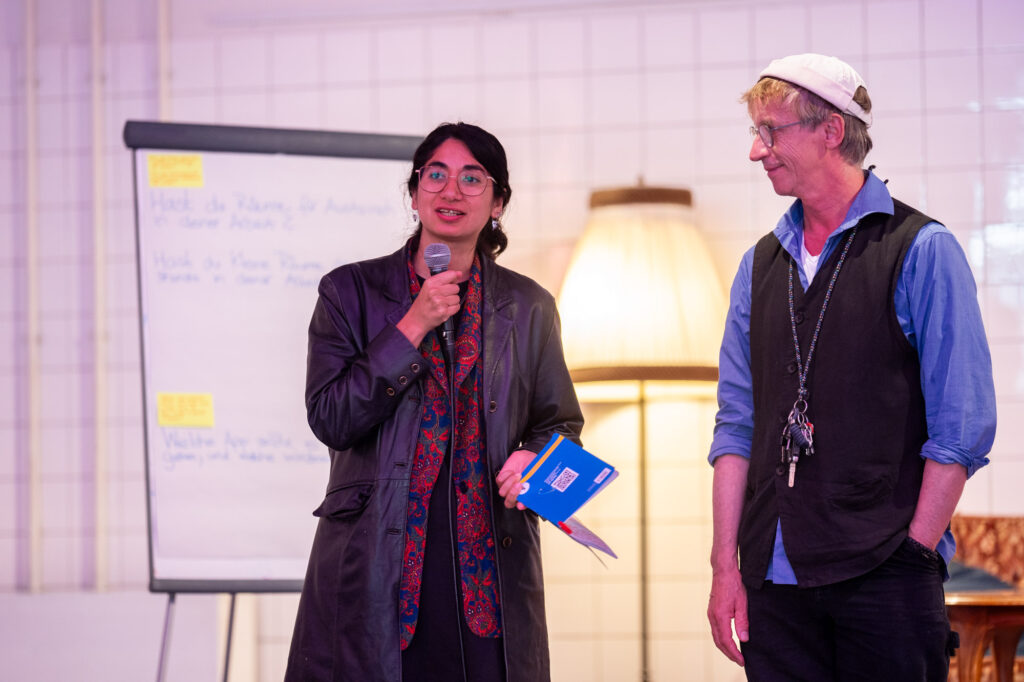
The event kicked off with introductory words by Juliane Beck and Stefan Hilterhaus from PACT Zollverein and Ana María Guzmán, event coordinator at the KHK c:o/re. The evening started by inviting the audience to reflect on the digitalization of work and the experience of the city, and situating them as workers themselves. They were asked to answer questions on three boards, such as: “What is the value of your work?”, “Is there space for resistance at your workplace?” and “How do you perceive the city on your way to work?”.
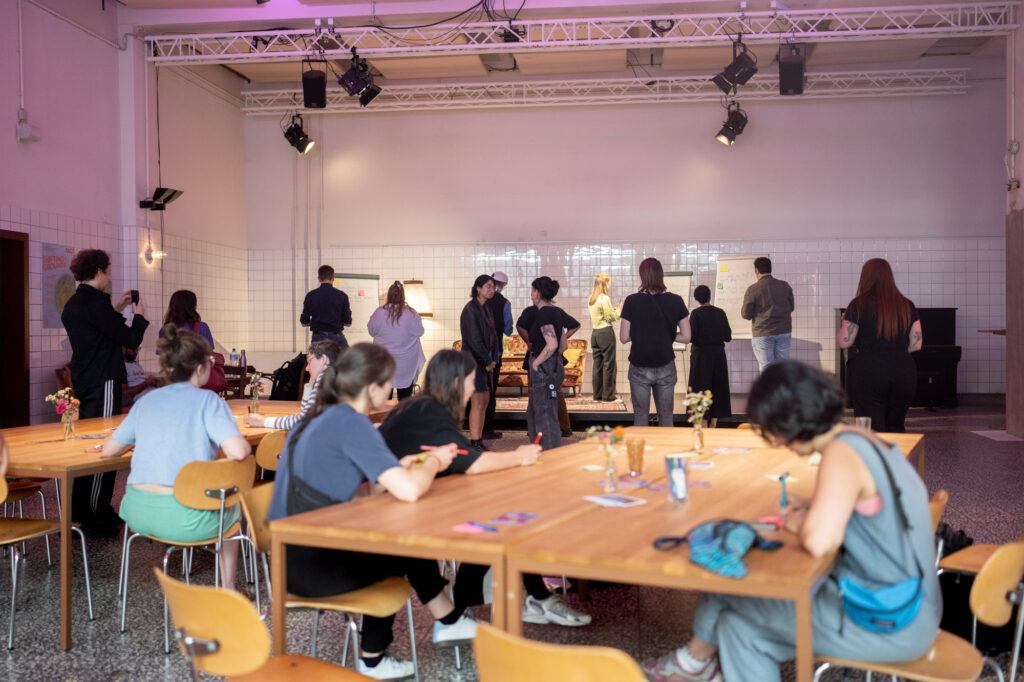
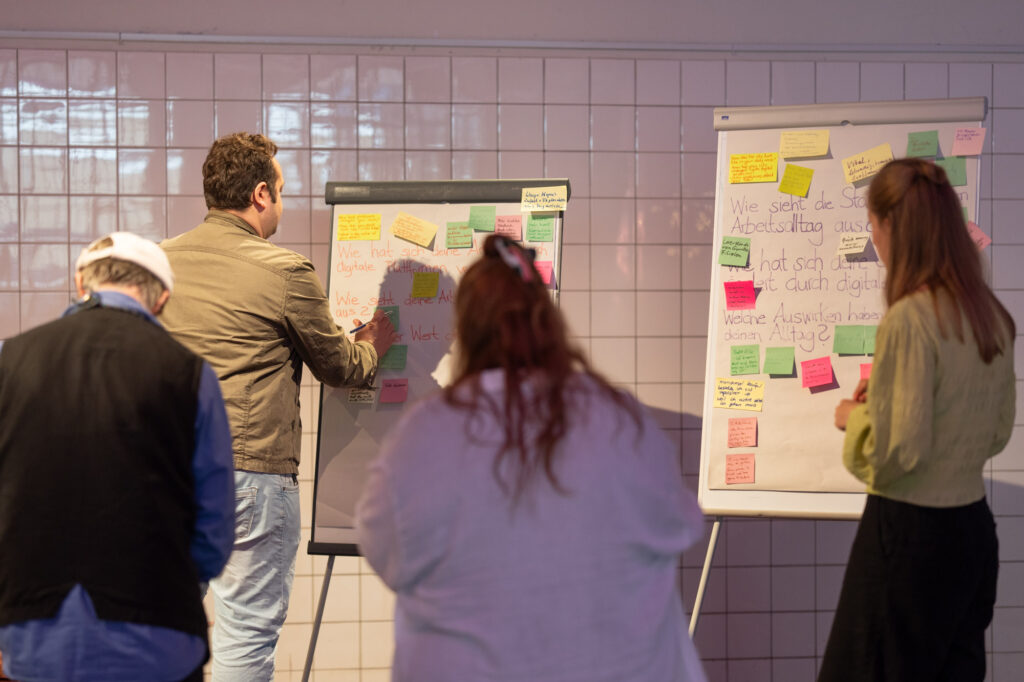
In the following talk, Janne Martha Lentz, research assistant and doctoral candidate at the University of Graz, spoke about the struggles of workers in the cleaning and care sector who are booked through an online platform, as well as the contrast between the public sphere of the internet and the private space of customers’ homes. This sector of the gig economy has specific challenges because it is not publicly regulated and consists mostly of invisible, female, and emotional labor. Unlike delivery service workers, cleaners are on their own when they arrive at strangers’ homes. Online and in other people’s homes, cleaners must deal with unspoken expectations, spatial control, and precarious working conditions. Intermediary platforms deliberately profit from and exacerbate existing inequalities: relationships of trust, personal networks, and responsibility are replaced by digital systems geared toward customer convenience — workers must be available and interchangeable.
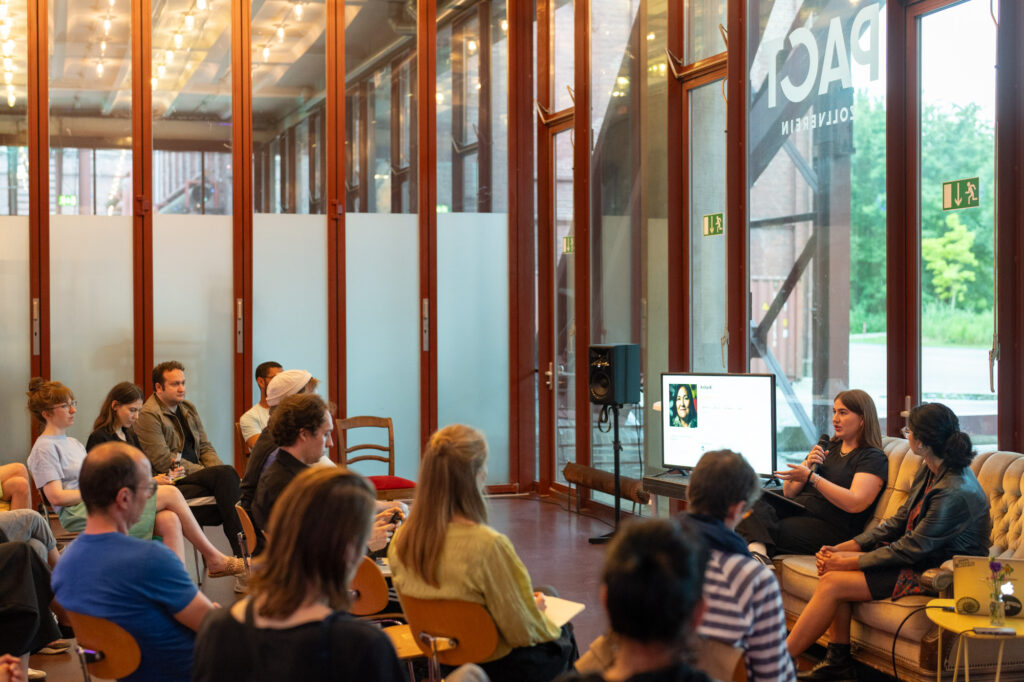
Jochen Becker, author, curator, lecturer and co-founder of metroZones – Center for Urban Affairs introduced their work on “City as Byte”, following the development of the so-called “creative industries” and its impact on cities. In several projects, the Center traces the influence of these industries on the city life through mapping, video, exhibition, or performance. The Center engages in critical urban research and examines current working and urban models. For instance, they have studied how companies like Amazon are altering the geography of cities. They ask if the ongoing expansion of platform economies has led to a new kind of architecture, with endless rows of delivery centers in the urban periphery and headquarters in the center? What is the connection between this topographical change and the reorganization of labor relations?
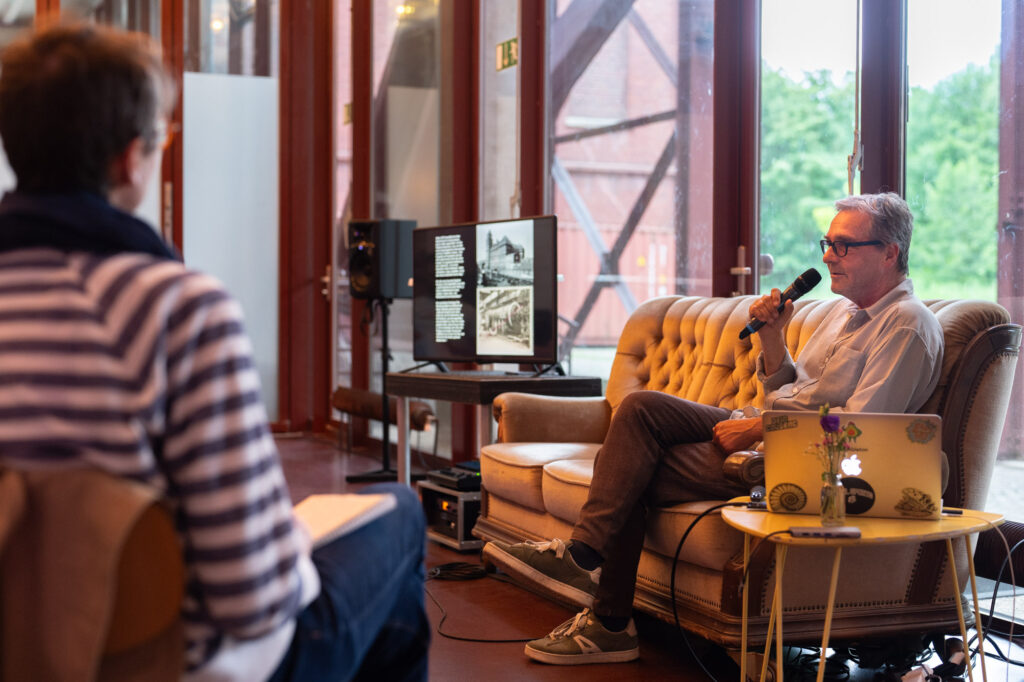
Last but not least followed a presentation by Sebastian Randerath, research associate in Digital Media Culture at the University of Bonn, Hedi Tounsi, council member at Amazon in Winsen (Luhe) and Semih Yalcin, Chairman of the General Works Council at Lieferando. In their lecture performance “How_to_resist.gpx”, they provided insights into everyday and organized resistance in platform-based warehouse and delivery work. They presented possibilities of resistance in working environments that make people disappear behind algorithmic tracking and discussed how solidarity can arise between jobs, apps, and chat groups. Drawing from their experiences working for app-based delivery services and Amazon, they critically shed light on the working conditions of delivery riders and precarious employees at big companies. They also presented a toolbox of different forms of resistance.
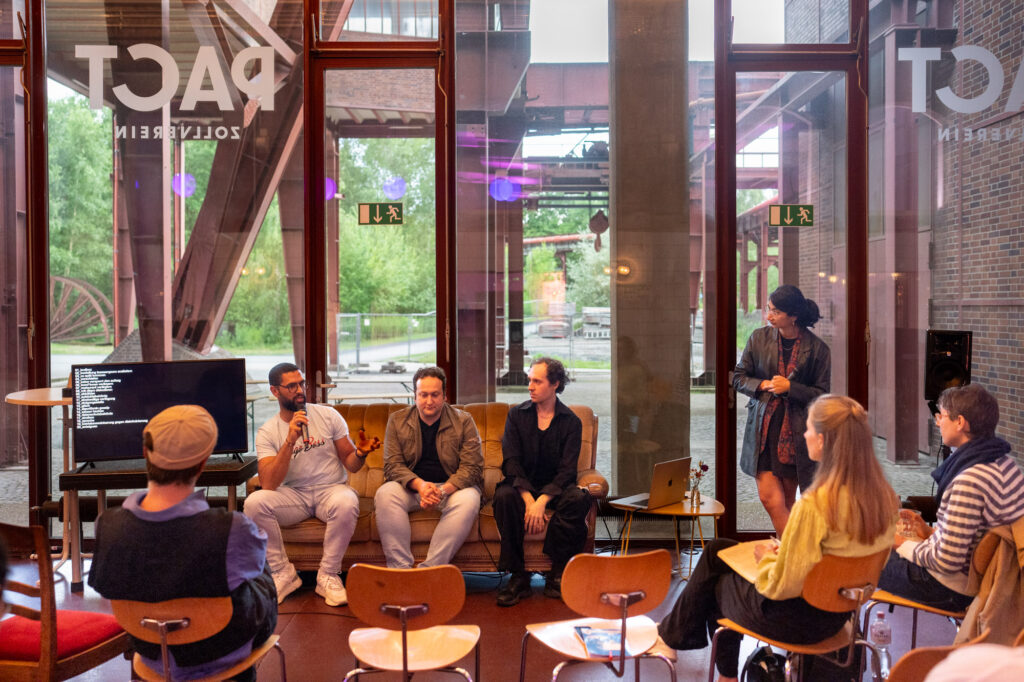
The event ended with an open exchange and a joint dinner, which offered an opportunity to further discuss the invisibility of data-driven work. It raised questions about the potential for emergent forms of resistance and solidarity in digital societies and the future of work. The event was also an opportunity to reflect on the materiality of data and data-driven economies. Data is material and inscribed in infrastructure, roads, cities, and the process of extracting it from bodies and labor.
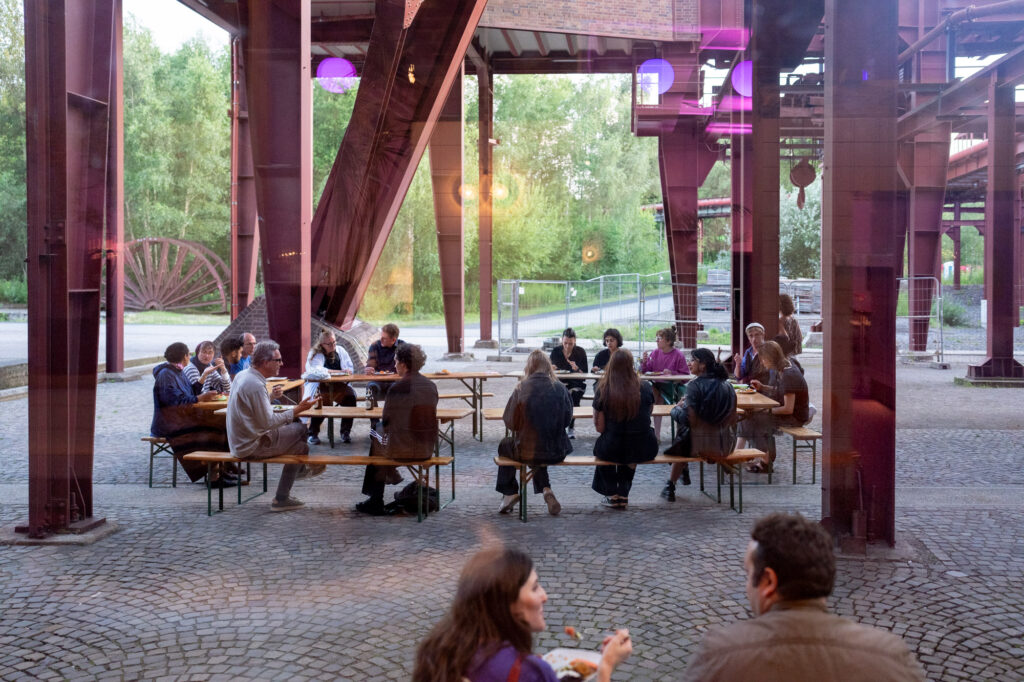
“Work – Clicks And Crowds” marks the start of the new series “Hidden Futures” at PACT, which is developed and organized in cooperation with the KHK c:o/re. The series focuses on the varieties of the future designed by science and technology and brings together social actors, researchers, and artists to generate aesthetic forms of understanding the complexity of digital society. The series explores new research methods to communicate the complexity of digital society together with artistic and research methods. It is part of our artistic research area and of varieties of science. Stay tuned for the next event in the series.
© Photos: Dirk Rose / PACT Zollverein
The Artwork Is the Network
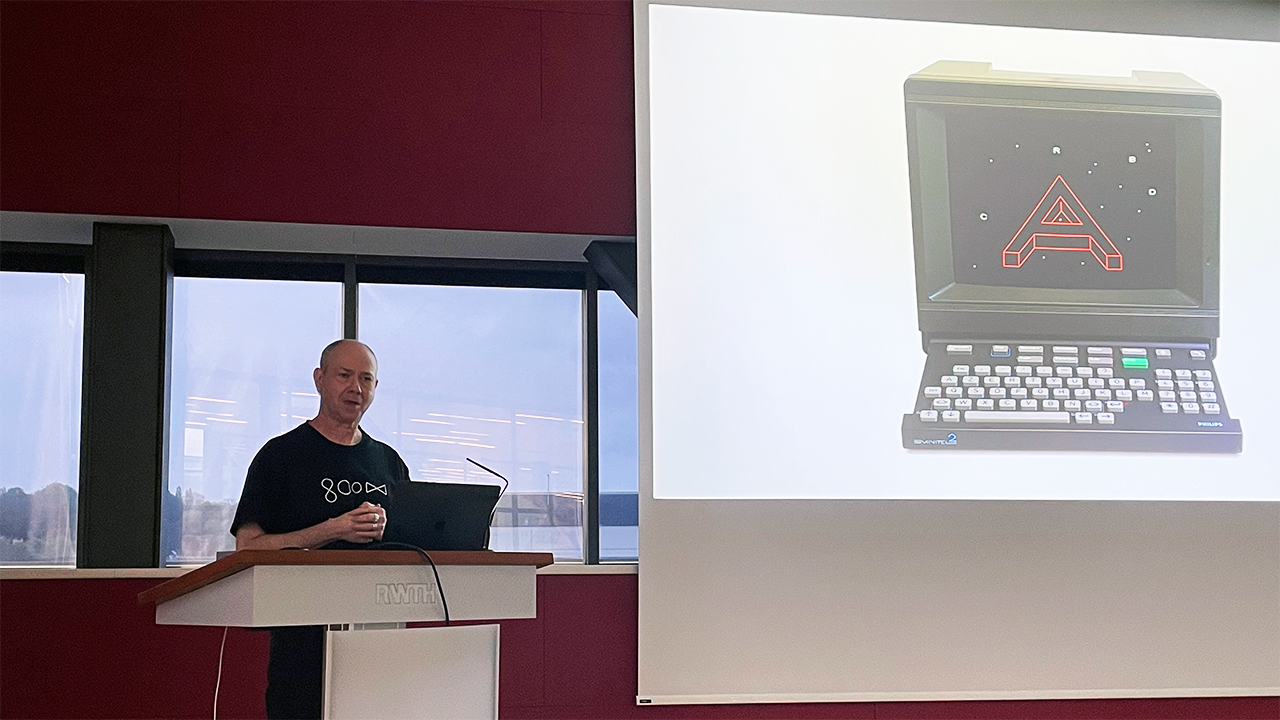
ARIANNA BORRELLI
The workshop “After Networks: Reframing Scale, Reimagining Connections”, organized by c:o/re Fellow Nathalia Lavigne, took as its starting point the increasing critiques to digital platforms as monopolizing and shaping networking according to economic interests, and so leading to a crisis of social interactions.
A key question at the meeting was whether and how artistic activities can help (re)imagine connections beyond digital social media, and artist Eduardo Kac was invited to present and reflect his work in this perspective. Given the critical stance of the workshop towards new technologies, Kac could at first appear as a strange choice, since his artworks, while of extremely diverse nature, all made use of what were at the time cutting-edge technologies, from early computer networks to space travel. Can we use technology to reach beyond Big-Tech-dominated networks? Let us seek the answer in Kac’s works as he presented them at the c:o/re event.
Eduardo Kac created his first artworks in Brazil in the early 1980s by manipulating the pixels on a computer screen, and had to work hard to have the results accepted as an art piece for an exhibit. Later, he artistically explored one of the first computer network: the French Minitel. In the 1980s, the French government had decided to kick-start one of the first forms of a nation-wide digital information network. Minitels were not personal computers, but videotex terminals with screen and keyboard: they could be loaned for free from the Post offices, plugged into the telephone network and so enabled to send or request information, access bulletin boards, book tickets, buy products – or view four works by Kac.
At the event, the artist showed us on a large screen an example of what the users would have seen on their Minitel viewer. In the work “Reabracadabra” (1985) colored lines slowly drew themselves from top down on the screen, and eventually became recognizable as the letter A, surrounded by small letters forming the word abracadabra. Even though Kac had shown us before a picture of the finished image, seeing it slowly emerge from the dark screen with a simple, but fluid motion was somehow surprising, as the effect was quite different form today’s digital imaging. Like all information received through the Minitel, the artwork could not be stored locally, and disappeared when the screen was cleared. In other words, the art existed in the connection, and only as long as the connection itself was there. Indeed, the original artworks disappeared for good when the French government finally switched off the Minitel network, but Kac had already been active to recover and reconstruct them, and so they could be displayed on original Minitel terminals at the exhibition “Electric Dreams. Art and Technology Before the Internet” (Tate Modern, London 28/11/24-1/6/25). Thus, the work also explores questions of the limits of archiving digital artworks, and lets us wonder how far a recreated network can support the “same” artwork.
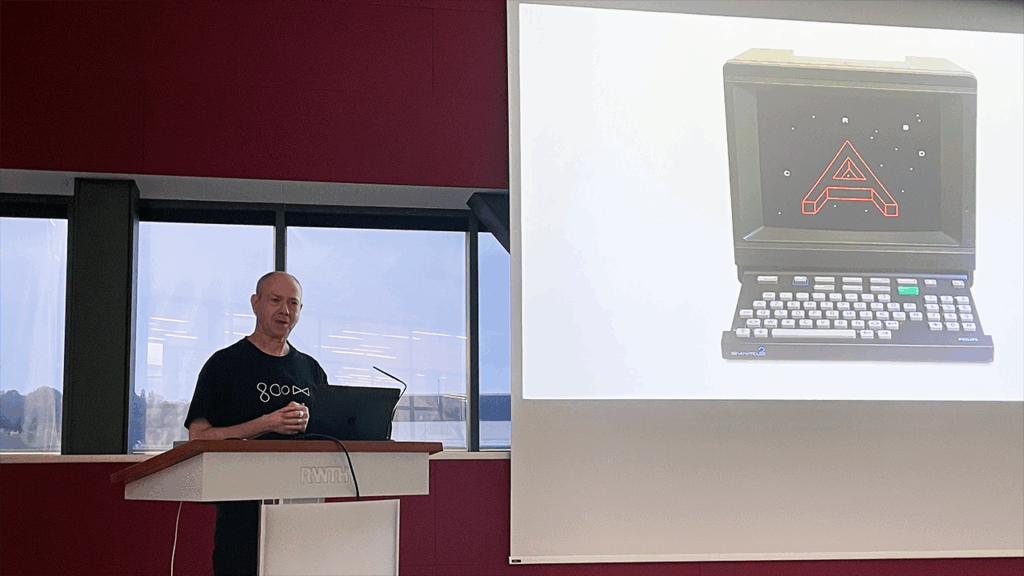
During the 1990s, the internet became a global phenomenon, but in the meantime Kac had become active in another technological outreach: biotechnologies. Other than the Minitel artworks, Kac’s creations in this field are quite well-known, especially the GFP Bunny (2000), a genetically engineered rabbit which glows in the dark. Its presentation gave rise to broad and intense media reactions which surprised its author and prompted him to embed them in new artworks. Kac pointed out that the pop-culture reaction to his work gave him the opportunity of opening a communication channel, where he would send implicit messages to companies, television shows and other agents quoting his work. This communication channel was a way to create networks via implicit messages, where the media is the globality of media and the artwork becomes the medium enabling communication. Kac also presented another example of art involving non-human life forms: “Essay Concerning Human Understanding” (1994), in which a bird and a plant are enabled to communicate in a bio-technological environment and so generate art for each other. Here, technology and human actors become a network for the creation and consumption of art on the part of non-human creatures.
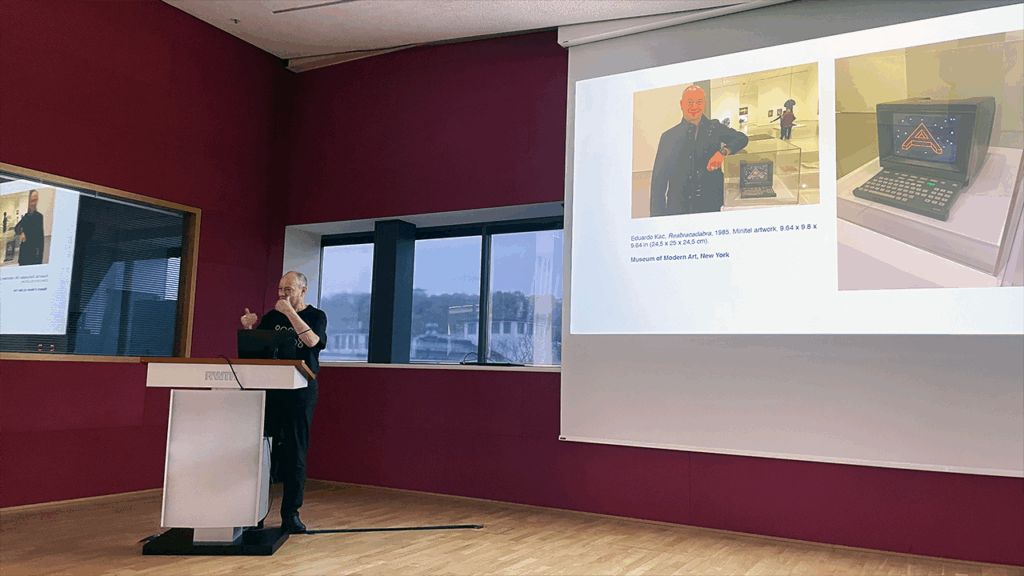
The final works Kac discussed at the workshop turned to yet another cutting-edge technology: space travel. With the cooperation of NASA since the early Noughties, Kac placed artworks in space, and one of them, a cubic, laser-engraved glass sculpture named “Adsum”, lies today in the Mare Crisium, a crater on the Moon’s face always visible from Earth. Yet these are “only” earthly artworks placed in space: the next creation Kac showed us in his presentation was an artwork produced in space to be consumed in space. “Inner Telescope“ is a technologically minimal creation made out of two standard sheet of paper by using only the bare hands and a pair of scissors. The hands were not those of the artist, though, but of French astronaut Thomas Pesquet who, following Kac’s instructions, produced the artwork during his stay in the International Space Station (ISS) in 2017. Looking like an M pierced by a tube, the work on Earth would only clumsily and formlessly slump onto a surface, but under zero gravity it floats lightly against the backdrop of the earthly blue marble: the first native outer space artwork. Who is the artist here: Kac, the astronaut, the zero gravity environment – or maybe NASA? Clearly, this question makes little sense, as the work highlights what was already implicit in the previous ones, namely the number factors and actors which combine to produce a work of art, blurring the distinction between creators and consumers, and letting them all appear as nodes in a live artistic network. Kac’s creative impulse takes the role of an enabler, setting up a bio-physical-technological network and artwork.
Let us now go back to the initial question: Can we use technology to reach beyond Big-Tech-dominated networks? Kac’s works show that this may be possible by highlighting how artworks, however technologically based, are never made out of technology, but of the situated entities communicating through it, be they humans on earth or space, animals or plants, or paper floating in space. In a similar way, we might go beyond today’s social networks not by rejecting them, but by becoming aware that their digital technology does not constitute a new, magical network for us to live in, but is only an additional factor enabling life forms in the universe to live out their inner potential for connection. We are the network, if we so imagine ourselves.
Get to know our Fellows: Daniela Wentz
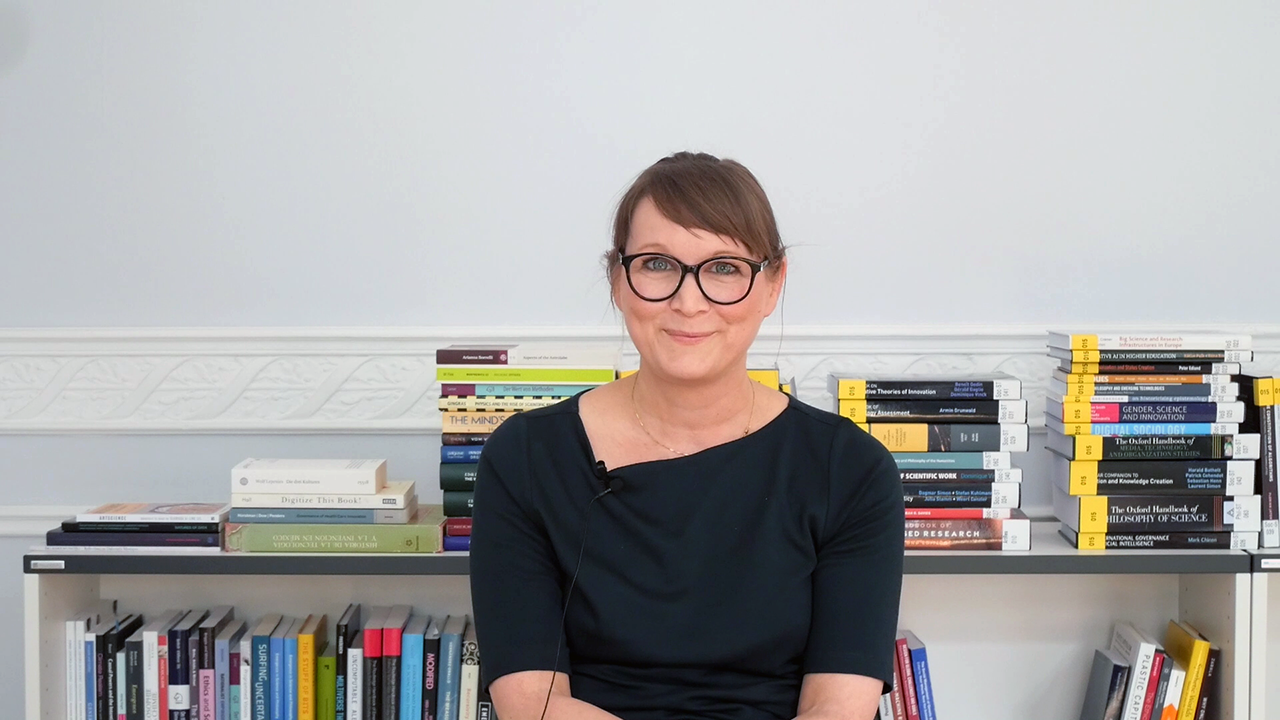
Get to know our current fellows and gain an impression of their research. In a new series of short videos, we asked them to introduce themselves, talk about their work at c:o/re and the research questions that fascinate them.
In this video, Daniela Wentz, a media scholar with a focus on media history, explores the history of artificial emotional intelligence through technologies developed for autism diagnosis and therapy. She examines how affective computing and social robotics draw on behavioral science and gamification, and re-narrates the role of autistic individuals as active agents within these experimental systems and their evolving technological histories.
Check out our media section or our YouTube channel to have a look at the other videos.
Get to know our Fellows: Ehsan Nabavi
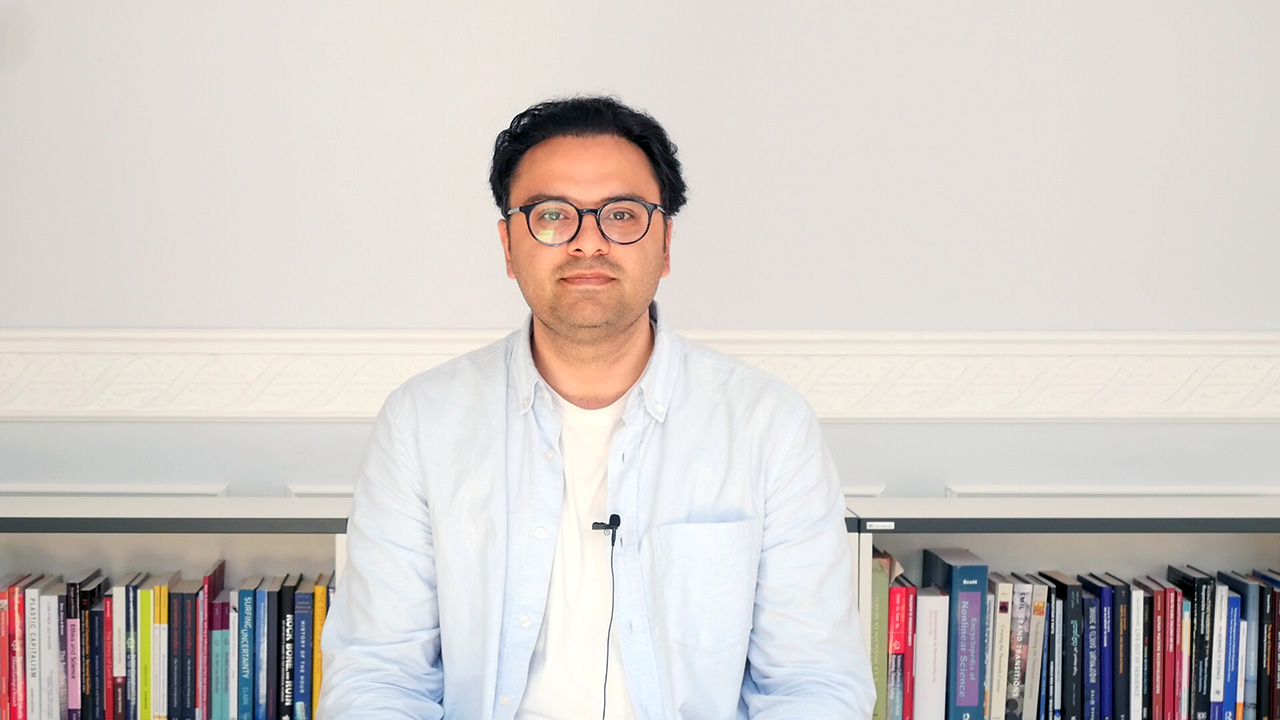
Get to know our fellows and gain an impression of their research. In a new series of short videos, we asked them to introduce themselves, talk about their work at c:o/re and the research questions that fascinate them.
In this video, Ehsan Nabavi, senior lecturer in technology and society at the Australian National University, reflects on the power of modeling in shaping decisions across science, society and governance and discusses how assumptions, values and imaginaries transform both the construction and the impact of system models. He emphasizes that understanding these social and political dimensions embedded within modeling is essential to fostering responsible innovation.
Check out our media section or our YouTube channel to have a look at the other videos.

